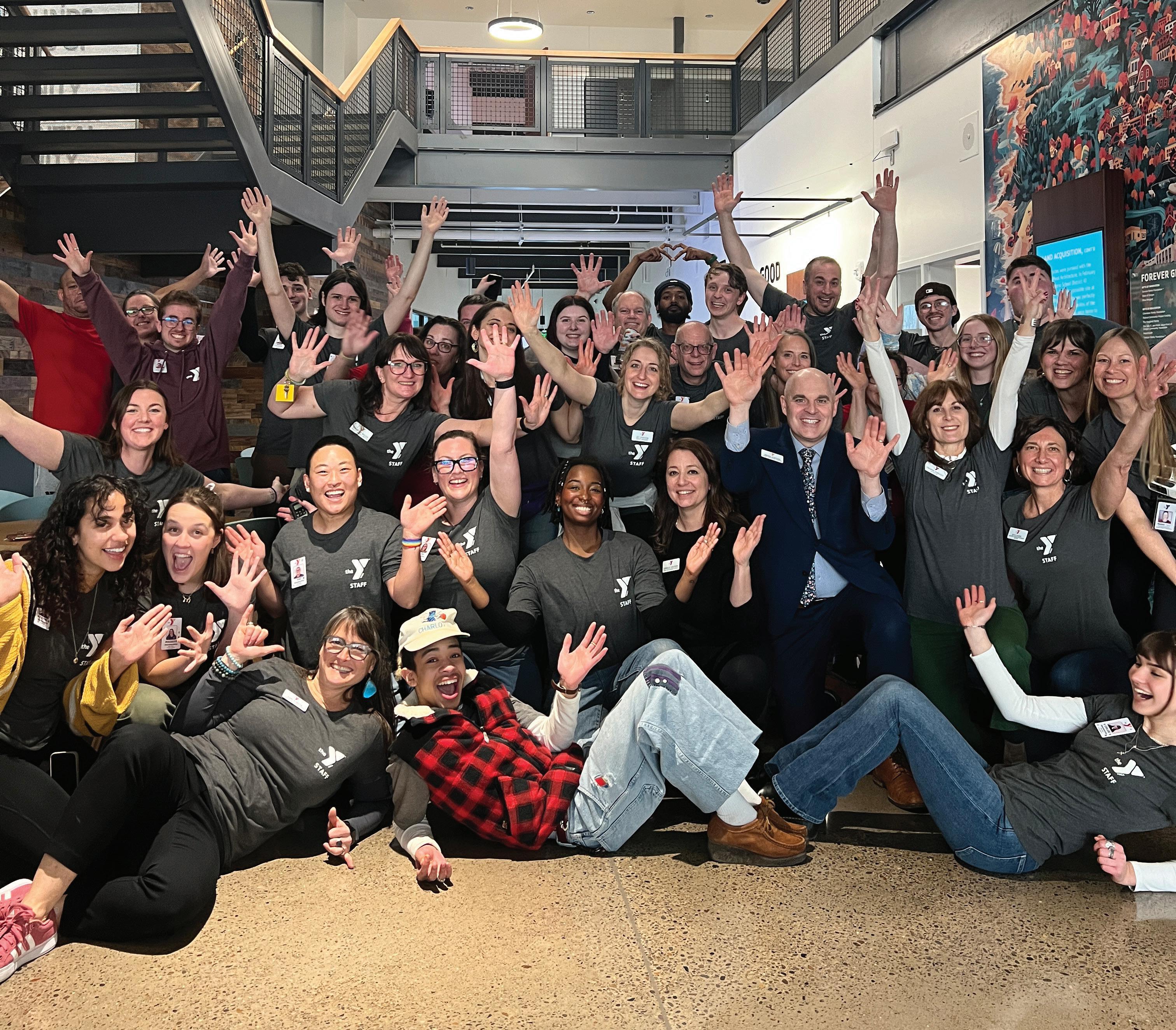Nag: United Against the Budget Cuts
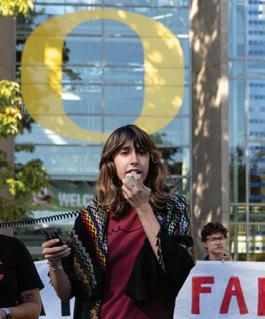
University of Oregon associate professor nominated to Board of Trustees by Gov. Kotek
Cozy up with these delicious fall finds from Trader Joe’s
STUDENT TOURS


Nag: United Against the Budget Cuts

University of Oregon associate professor nominated to Board of Trustees by Gov. Kotek
Cozy up with these delicious fall finds from Trader Joe’s

Not your typical campus tour: spots on campus to discover the history and art at the University of Oregon.

Following move in at the University of Oregon on Sept. 25 and 26, The Daily Emerald has compiled a list of nine walkable stops on campus that give a well-rounded view of the history, art and feel of the university.
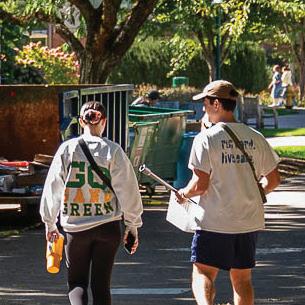

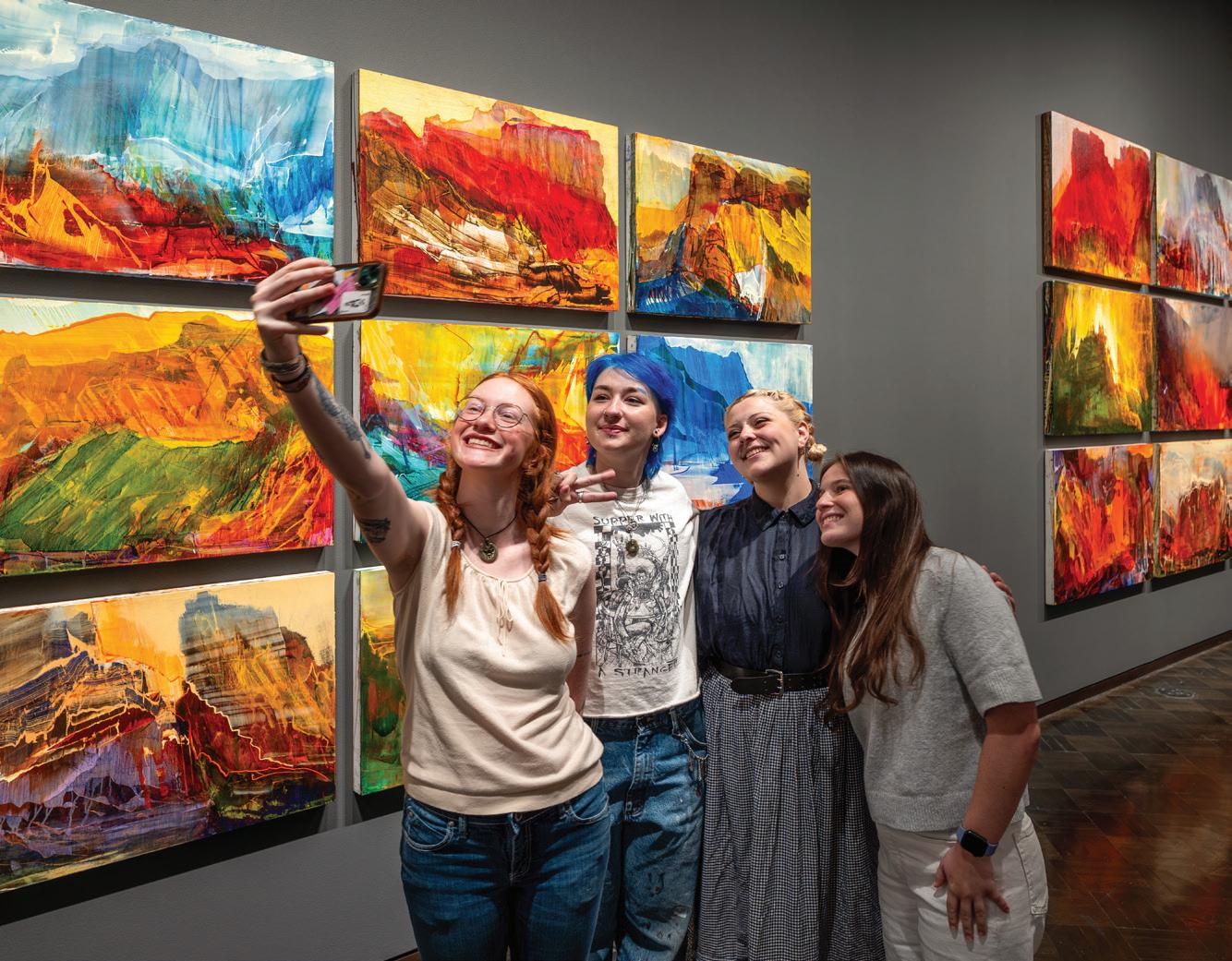


EDITOR IN CHIEF
Tarek Anthony
PRINT MANAGING
EDITOR
Ryan Ehrhart
DIGITAL MANAGING
EDITOR
Ysabella Sosa
NEWS EDITOR
Reilly Norgren
INVESTIGATIONS
EDITOR
Ana Narayan
A&C EDITOR
Claire Coit
SPORTS EDITOR
Jack Lazarus
OPINION EDITOR
Gracie Cox
PHOTO EDITOR
Saj Sundaram
COPY CHIEF
Olivia Ellerbruch
VIDEO EDITOR
Jake Nolan
PODCAST EDITOR
Stephanie Hensley
SOCIALS EDITOR
Ysabella Sosa
VISUALS EDITOR
Noa Schwartz
DESIGN EDITOR
Adaleah Carman
DESIGNERS
Eva Andrews
PUBLISHER AND PRESIDENT
Eric Henry (X317) ehenry@dailyemerald.com
VP OPERATIONS
Kathy Carbone (X302) kcarbone@dailyemerald.com
DIRECTOR OF SALES & DIGITAL MARKETING
Shelly Rondestvedt (X303) srondestvedt@dailyemerald. com
CREATIVE & TECHNICAL
DIRECTOR
Anna Smith (X327) creative@dailyemerald.com
ACCOUNT EXECUTIVES
Torin Chevalier
Camcole Pereira
Ava Stephanian
Elliot Byrne
THE DAILY EMERALD
The Daily Emerald is published by Emerald Media Group, Inc., the independent nonprofit media company at the University of Oregon.Formerly the Oregon Daily Emerald, the news organization was founded in 1900.
Emerald Media Group 1395 University St.,#302 Eugene, Or 97403 (541)-346-5511


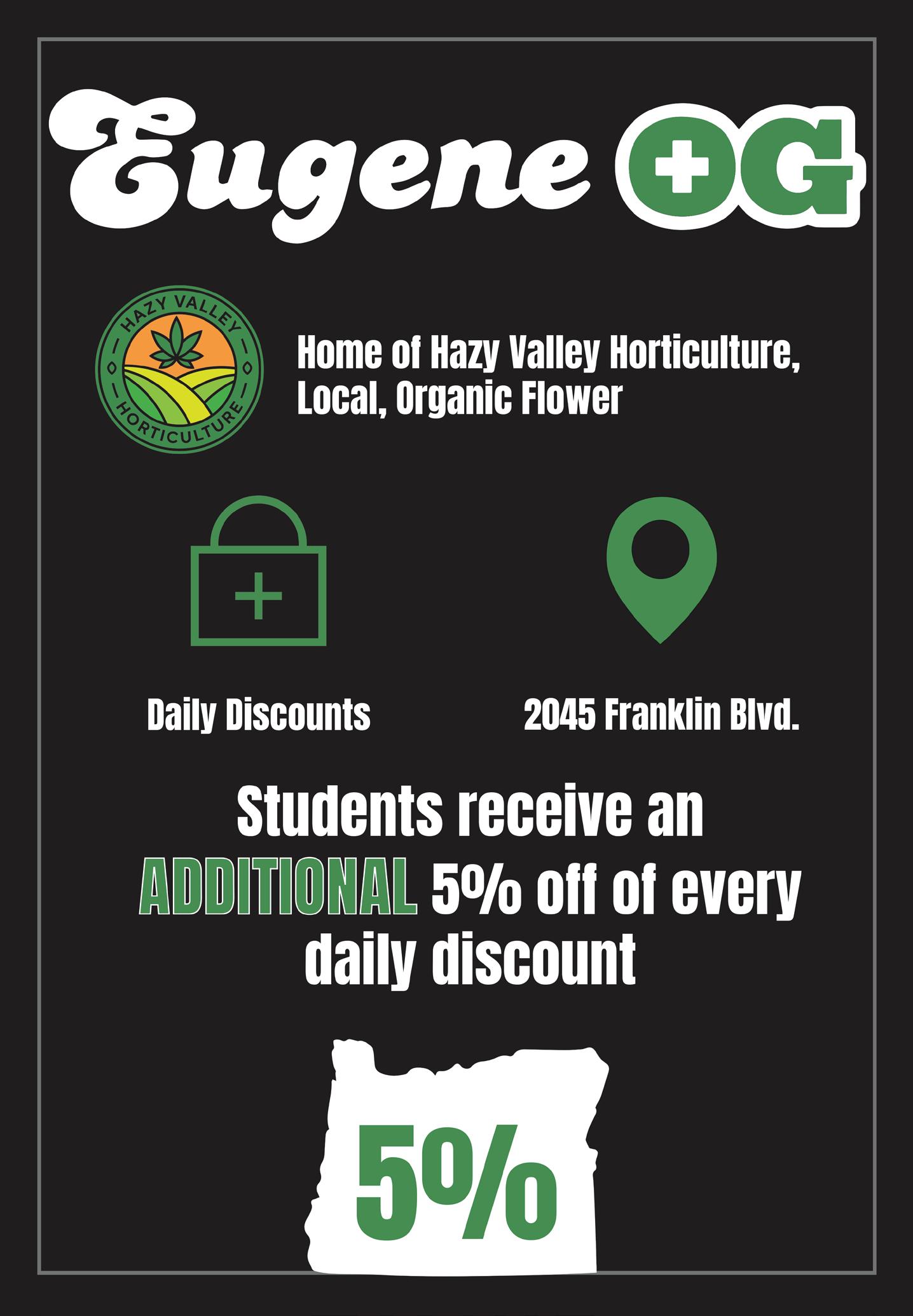






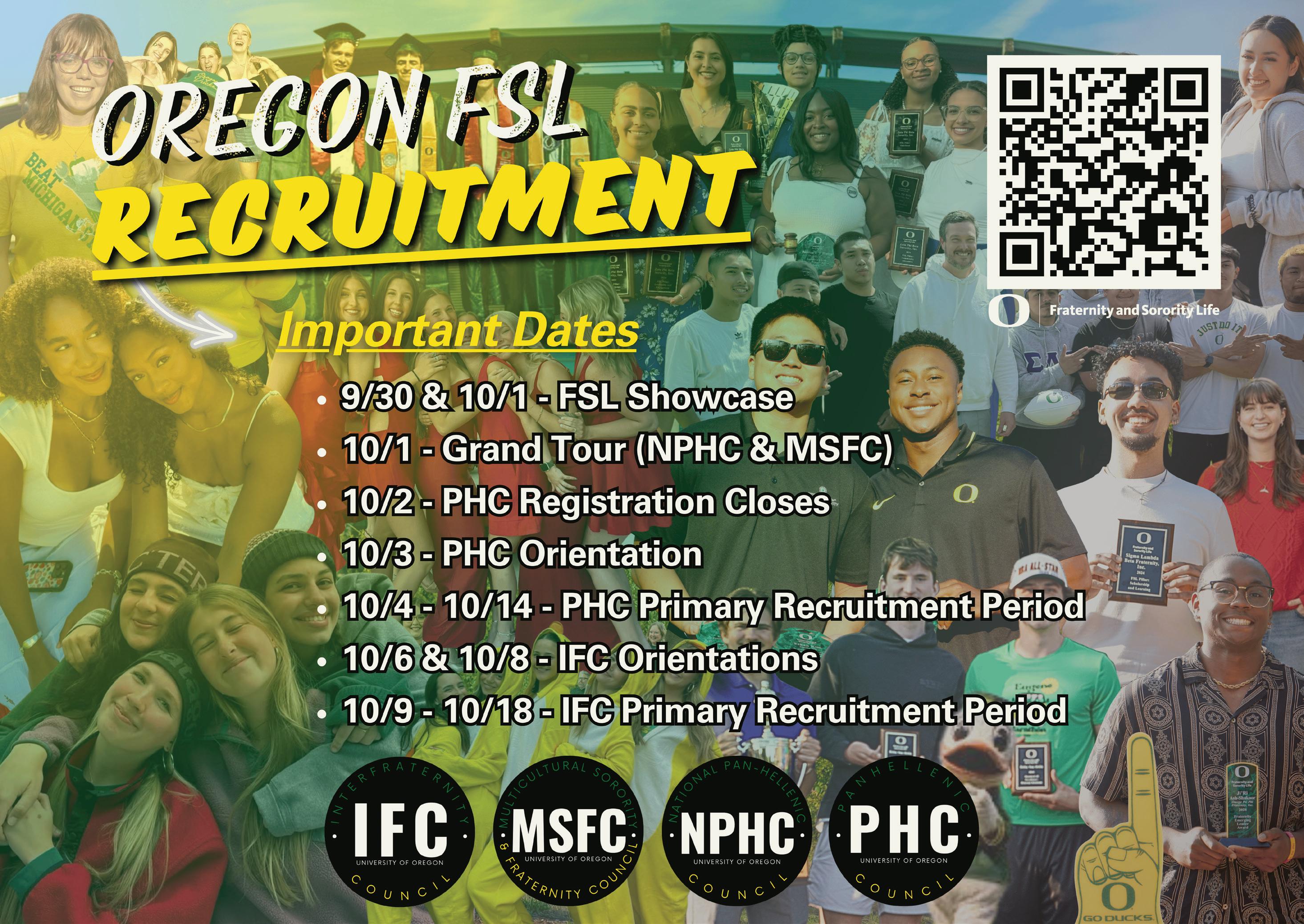



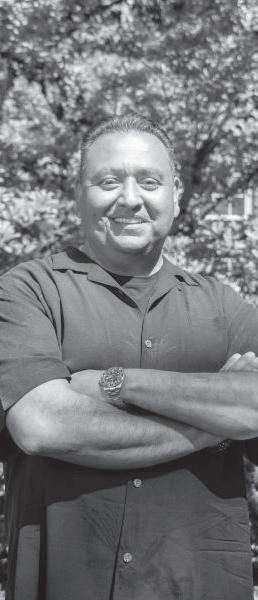
Gerard
By Billie Corsetti News Reporter
Gerard Sandoval, an associate professor in Planning, Public Policy and Management at the University of Oregon, was nominated by Gov. Tina Kotek to become a trustee on the school’s Board of Trustees.
The Board of Trustees is a group of 14 individuals from different career paths who are nominated by the Governor to hold fiduciary responsibility over the University, emphasizing financial management. The board requires at least two undergraduate students, and a mix of faculty, alumni, non-faculty, graduate students and more to diversify perspectives in the positions.
Sandoval was nominated as the faculty trustee, representing staff experience and perspective. Sandoval said that he would ultimately advocate for the interest of the UO, in hopes of securing the school's financial stability.
“I also have a secondary role of representing the interests of the casualty,” Sandoval said. “In terms of advocating for the faculty, it’s pretty simple. They want to do their research, so they need their funding. They want to be able to have the academic freedom to teach what they want to teach.”
Sandoval’s own research focuses on urban development and planning in relation to immigration, such as housing gentrification and redevelopment’s effects on undocumented workers and immigrant communities.
Due to his expertise, Sandoval was appointed and served as a commissioner on the Land Conservation and Development Committee from 2019 to 2023. He also served as a councilmember on the Oregon Housing and Committee Services for a four-year term.
Here are some tips to spice up your back-to-school outfits.
By Claire Coit Arts & Culture Editor
As the first week of school wraps up, fashionable fits are finally back on campus. With patterned tops and tiny shoes fill the streets on the way to class in the morning, you might be looking for some fall inspo. No matter your preferred style, back-to-school season is the perfect time to try out new outfits. These tips might just help you discover your new favorite look.
Ballet flats and tiny shoes
Last year, platform shoes were quite popular. This fall, we've done a 180, and shoe trends have gotten smaller than ever. Ballet flats, skinny loafers and sleek shoe picks are hitting the pavement on the campus streets. Typically found in
brown or black, these shoes are easy to pair with anything. Add a fun sock, and you've got a great way to complete your look for the day.
Although staples like a classic white tee or your favorite jeans are great things to have in your closet, this fall, fun patterns have made a comeback. Patterns like leopard print and florals made a big splash at this year's New York Fashion Week, and they might add just the right amount of personality to your outfits this fall.
Patterned pieces
My personal favorite patterns making a comeback are tiny polka dots and gingham. A touch of gingham brings a sense of fall coziness to outfits, especially in warm colors like beige and red. Meanwhile, tiny polka dots are a subtle pattern that can add a bit of flair to your outfits, especially in black and white. Adding patterns like these can bring your lecture hall outfits from good to great.
“On the Housing Committee, we gave out millions of dollars for building affordable housing throughout the state, so it was a very positive experience,” Sandoval said. “But the Conservation and Development Commission was a different experience, because we were regulating what cities can do with their land, so that was a lot more politically contentious… That experience really helped me understand how to make difficult decisions.”
Sandoval believes his experience with state-level politics will help him navigate the financial situation that the UO is struggling with. He said some of the decisions he had to make during his term on the Conservation and Development Commission were unpopular with others.
“I’ll be able to make tough calls when needed. I’m not a yes person, so I won’t just go along with what the board says,” Sandoval said. “For any decision that I have to make, I first really understand what the consequences of that would be, then I speak to a lot of different stakeholders on their thoughts, and then have a public discussion around that.”
Sandoval understands that his term on the Board of Trustees won’t be a smooth time.
“There’s a lot of low morale, and that’s because we have the perfect storm at the university. Our research funds have been cut, we’ve seen a drop in out-of-state students, and we have structural difficulties around our finances. All of these things have come together to form this perfect storm, where faculty are caught up in the middle.”
Sandoval testified in front of the Oregon Senate Committee on Rules and Executive Appointments on Monday and was officially confirmed by the Senate on Oct. 1.
“I would like to thank the Governor, the Senate Rules Committee, and the Oregon Senate for entrusting me with this critical responsibility,” Sandoval said in his official statement. “I won’t sugarcoat how difficult the next two years will be at the UO, but I’ll do my best to serve the university with honor and urgency.”
With a packed schedule, it's understandable for students to opt for the comfortable option, like leggings or sweatpants. While these are certainly stylish, some might want to look a bit more put-together while being comfy. Trouser jeans and maxi skirts are fashionable picks to achieve this goal.
Trouser jeans combine the professional look of work pants and the casual, more laid-back vibe of denim to create the perfect combination. These flowy, light denim pieces are a great addition to any outfit. Pair them with a sleek top or a comfy jacket and you'll be all set, whether you're studying in Knight Library or heading to a club meeting.
Meanwhile, maxi skirts are a classic for any wardrobe, especially on warmer days. While I do see more maxi skirts coming out during the spring term, it's still warm enough in Eugene on some days to extend their lifespan a bit beyond the summer season. Pair these with a fun chain belt and a nice sweater for a fun autumn look.
All in all, keeping up with the trend cycles can be a difficult thing to achieve, and oftentimes not worth it. I would suggest thrifting or shopping locally for an item or two off this list, if it matches your personal style. If not, finding a piece that inspires you and wearing it to classes is what keeps our campus cool and stylish. Whether you're wearing your favorite sweater or trying something new, whatever expresses your personality best is worth wearing.
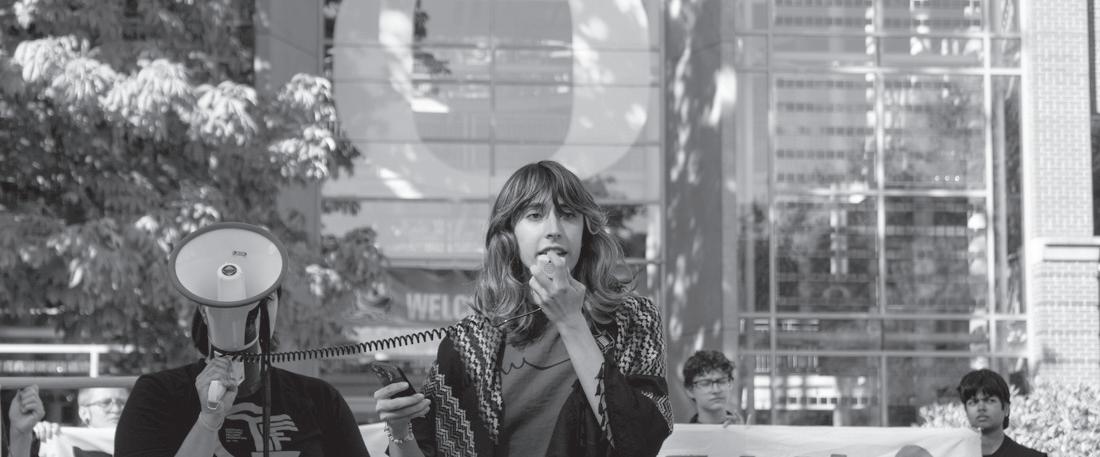
Opinion: With the recent budget cuts rolled out by the UO administration, it's important to strengthen shared governance between key stakeholders within the university to minimize damage.
By Ashiki Nag Opinion Columnist
Shared governance is the cornerstone of a healthy democratic institution, where important decisions are made with multiple stakeholders with a seat at the table in the decision-making process.
Higher education has been a target for federal funding under the Trump administration, with many federal avenues of funding being under direct attack. The administration has initiated moves to terminate over 4,000 grants, totaling more than $3 billion in higher education funding. These significant changes have led universities to multiple problems, creating a volatile fiscal environment for institutions.
During this process, many universities have made active efforts to involve student voices and have consulted the comments of the elected campus government. In contrast, the UO has taken steps away from shared governance.
The university has implemented an average 2.5% cut across its various schools and colleges to offset this budgetary deficit. It has announced the elimination of a total of 176 positions, resulting in the layoff of 117 workers.
“I think with the budget reductions, and I think multiple people will say this, not even chairs of colleges were consulted,” ASUO president Prisilla Moreno said. “It was just deans and vice presidents, and that’s an example of a weakened shared government… there were no student voices involved.”
With the recent budget cut rollouts, many staff, students and unions were caught off guard by these sudden changes, complicating the relationships they have had with the administration.
“The unions, like the student workers union were not consulted at all, and they’re getting quite the hit with the budget reduction,” Moreno said. The interim president of UO Student Workers, Mae Bracelin, had estimated an additional 100 job cuts, which were not represented within the university’s official count.
Moreno had commented about shared governance structures in relation to budget cuts within the Associated Students of the Big Ten Conference. She said that campuses on the East Coast and the Midwest often don’t have the same privileges and power compared to UO. ASUO has the power to fund student organizations and essential aspects of daily student life. ASUO also serves as a vital voice in other institutional matters that directly affect students.
Jonathan Blankenship, the student body president of the University of North Dakota, commented on the importance of a strong shared government when dealing with the budget cuts facing UND.
Blankenship pointed to the $660 million of TRIO funding being withheld by the Trump administration. This money would have funded McNair grants and opportunities for low-income and first-generation students.
“With North Dakota being a pretty rural state, we have a big population of those students here,” Blankenship comments, “So that is actually impacting us as a university and was something we were notified pretty quickly about, and have been taking steps to advocate as high as we can go Blankenship said the positive relationship with the current administration and Board of Trustees was important in this process, and they were able to work together in order to advocate for the
students being impacted by budget cuts.
“I think it definitely opens up a way for shared governance and for everyone in higher education to sort of come together and stand united, because I think it definitely is going to be an uphill battle throughout these coming years,” Blankenship said.
A strong, shared relationship between different university stakeholders is essential for effectively advocating for the best interests of students and staff. By upholding a stronger system of shared governance at UO, there can be room for more transparency and problem-solving.
By involving more student voices in the budget reduction process, there can be increased transparency and joint advocacy to minimize the impacts.
“It’s very fascinating that we have a lot of power, but it seems to have been dwindling for the past couple of years,” Moreno said. “I wanted to reiterate my shock that it’s been difficult to insert myself at the board of trustees meeting… so for them to conclude with ‘we actually had too much transparency’ is really worrisome about the state of shared governance at our university. ASUO’s going to work hard to make sure student voices are represented.”

Aishiki Nag is a sophomore, double majoring in political Science and global studies. She loves all things local government and state policy.







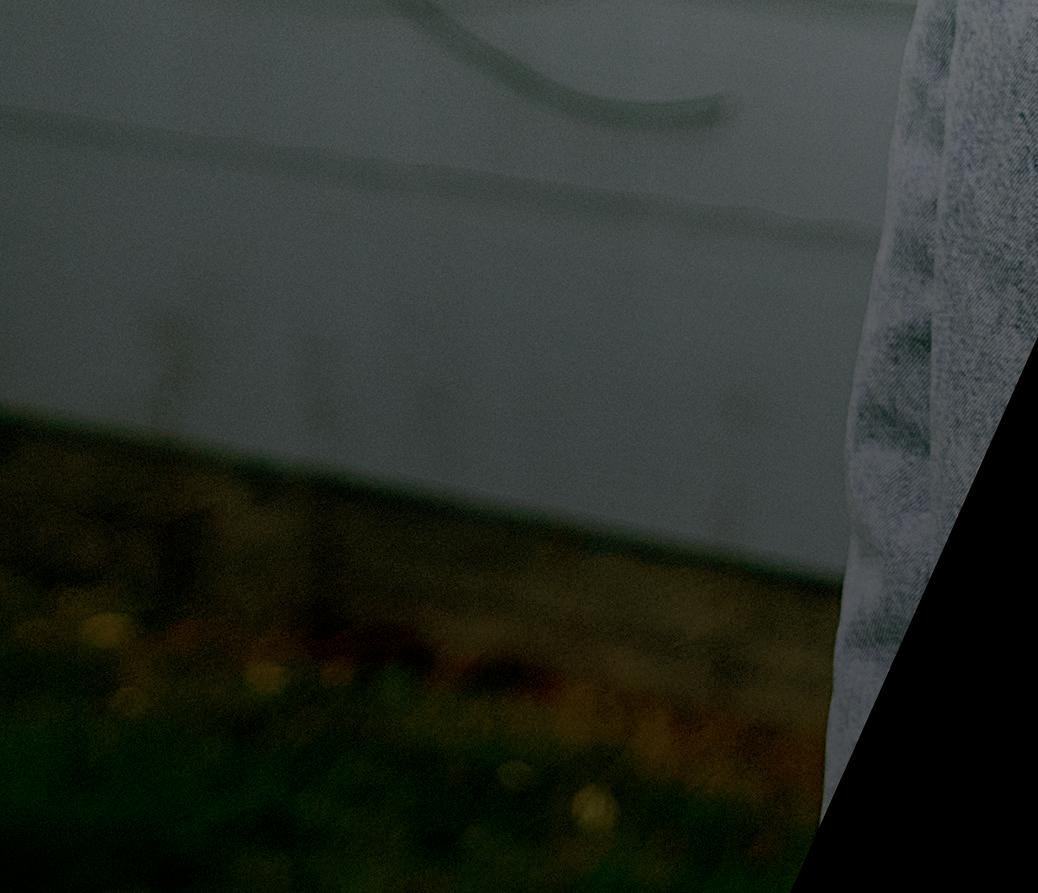


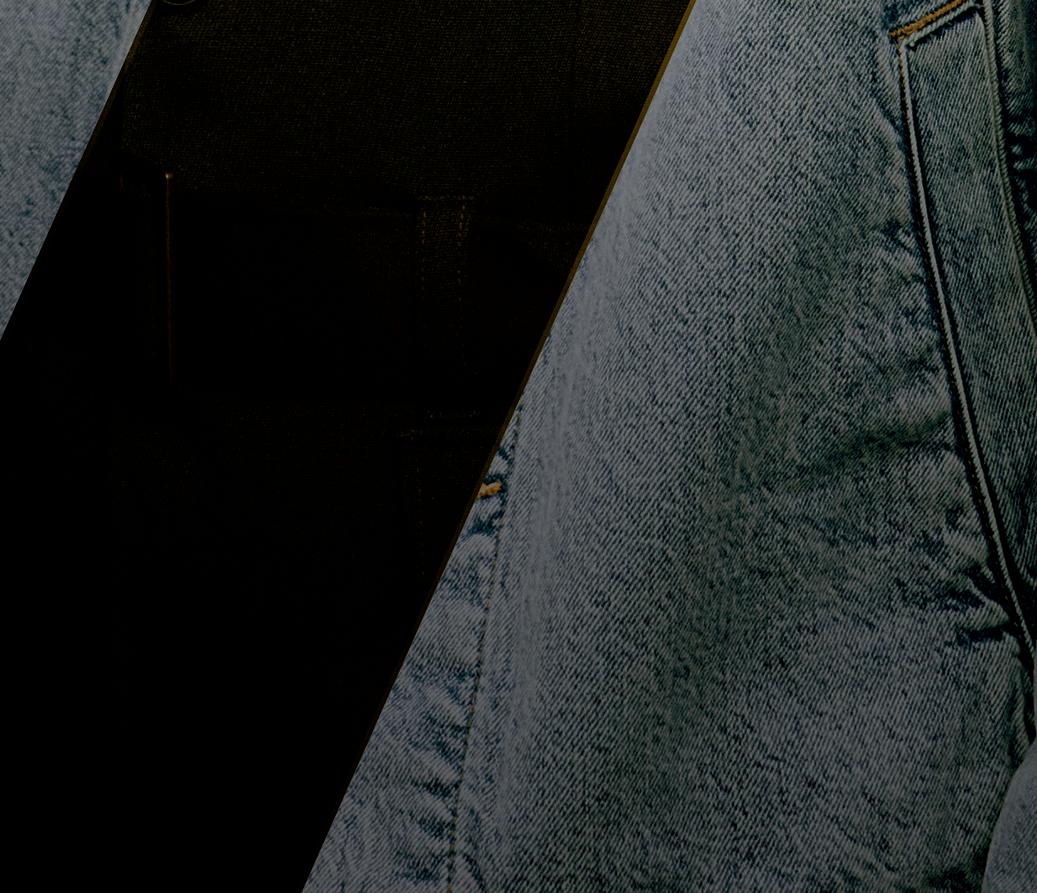

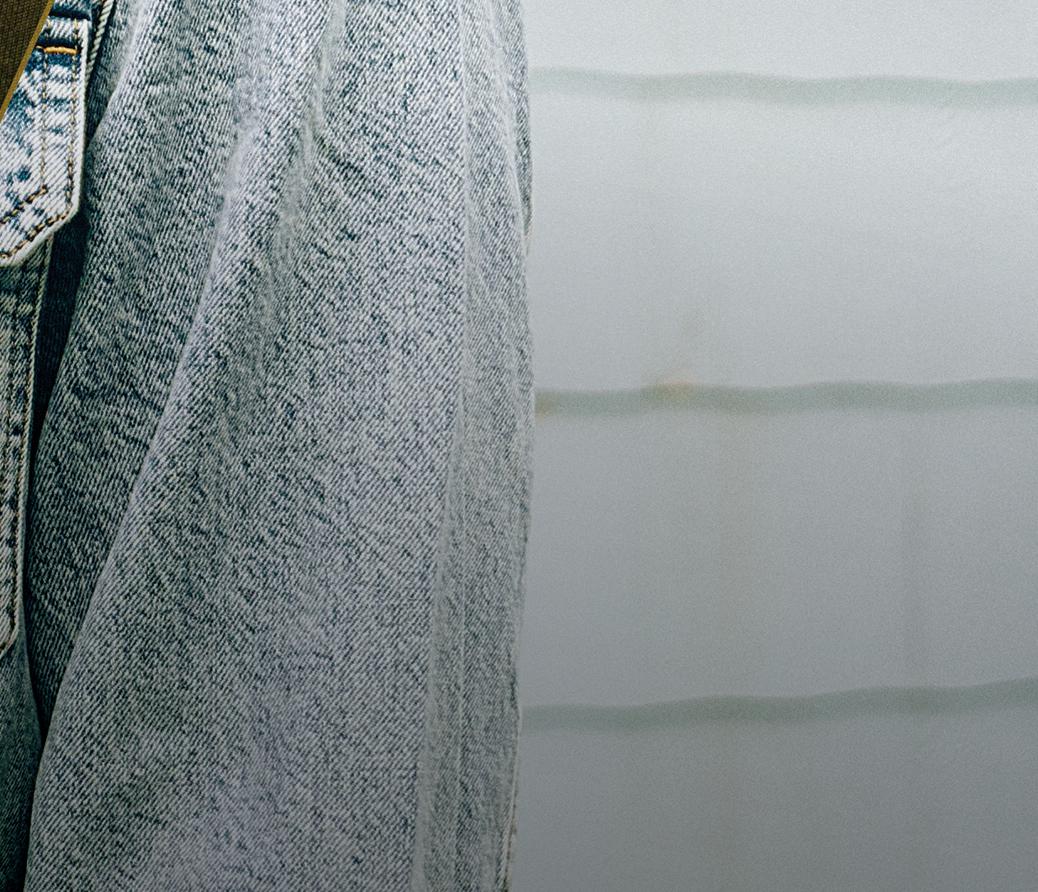
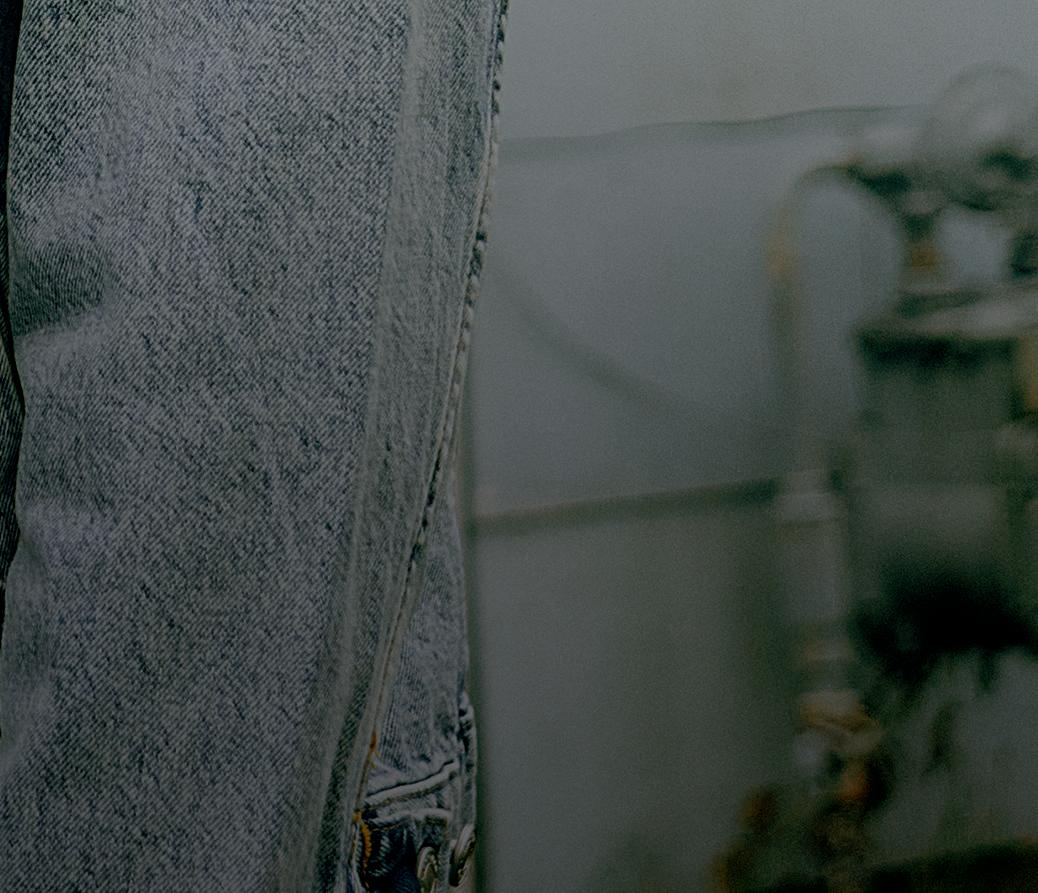





















By Everette Cogswell Arts & Culture Writer
The fall season is in full swing, and this time around, Trader Joe’s has gone all out with their festive treats, snacks, drinks, decor and more. Fostering all the autumn vibes, Trader Joe’s is ready to serve as your guide to the most cozy and perfect fall season. These are just some of the tasty goodies they have to offer.
The strongest section of Trader Joe’s autumn catalog is clearly the baked goods. While there were many options to choose from, the pumpkin brioche twist bread is a delicious pick from their bakery selection. Flaky and flavorful, the pumpkin brioche twist bread is a perfect snack to have in the morning with a cup of coffee or tea. When toasted just right with butter on top, a slice is the perfect way to start your day.
While butternut squash ravioli isn't everyone's cup of tea, it is quite relevant with the Trader Joe’s autumn flavor profile. Trader Joe’s has strong selections when it comes to their stuffed pastas, but this ravioli didn’t quite hit the mark. The ravioli is a great way to cozy up, and while it has strong qualities, the flavor is slightly too sweet and feels as though it’s missing something. This item is paired best with butter, salt and pepper.
Another goodie from the bakery section are the teeny tiny apple pies. These pre-packaged pies were an unexpected gem and easily one of the better things listed here. The tiny personal pies consist of a delicious crust with a crumble on top and a gooey apple cinnamon filling, creating the perfect sweet treat after a meal. These fit quite nicely into the fall vibes, and you should definitely pick them up.
One thing that stood out about the fall selection was the different spreads and butters. They had apple pie butter, maple butter and pumpkin butter. The pumpkin butter is essentially the filling of a pumpkin pie and was similar in texture, smell and taste. Originally, I paired the pumpkin butter with an apple slice, but after some trial and error, the spread pairs best with a simple Ritz cracker, and surely would be delicious on a piece of toast as well. The butter was not too sweet and contained a lot of flavor.
There’s nothing like a nice apple cider to welcome the fall season. The Trader Joe's cider does just that. This flavorful drink is perfect for this time of year, and it is just as tasty cold as it is warm. A classic apple cider is hard to resist, and
With hints of pumpkin and butternut squash, this creamy tomato-based pasta sauce is fall in a jar. Unlike the ravioli, the butternut squash in this sauce creates the perfect hint of sweetness. When paired with the Trader Joe’s cheese tortellini, this sauce is simply delectable. The pumpkin and creamy tomato combo is rich and perfect for autumn.
While I am not a coffee drinker, I was intrigued by the salted maple cold foam. This mouthwatering treat can be used to create all your favorite fall coffee shop drinks right at home. On its own, you can really taste the light salty component, and the maple is sweet. This topping would be delicious on a coffee or hot chocolate, and is even tasty as a dollop on a spoon.
Trader Joe's didn’t hold back this year as they stocked their shelves for the autumn season. Not only did they have tasty food, drinks and snacks, but they also had festive dog treats, home decor and even beauty products that encapsulate fall time. Affordable and accessible to all, Trader Joe’s is a great home base for fall grocery shopping.
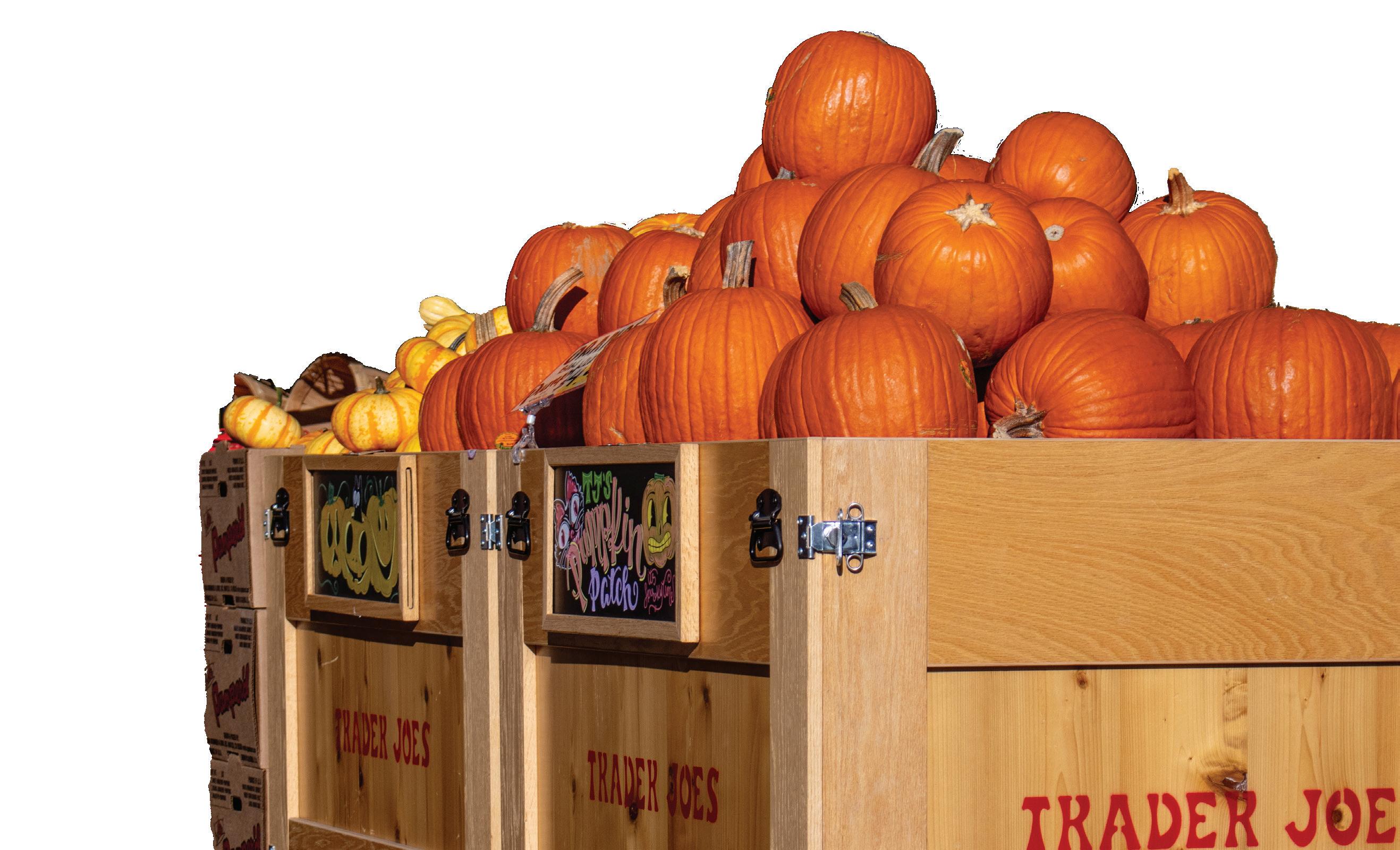
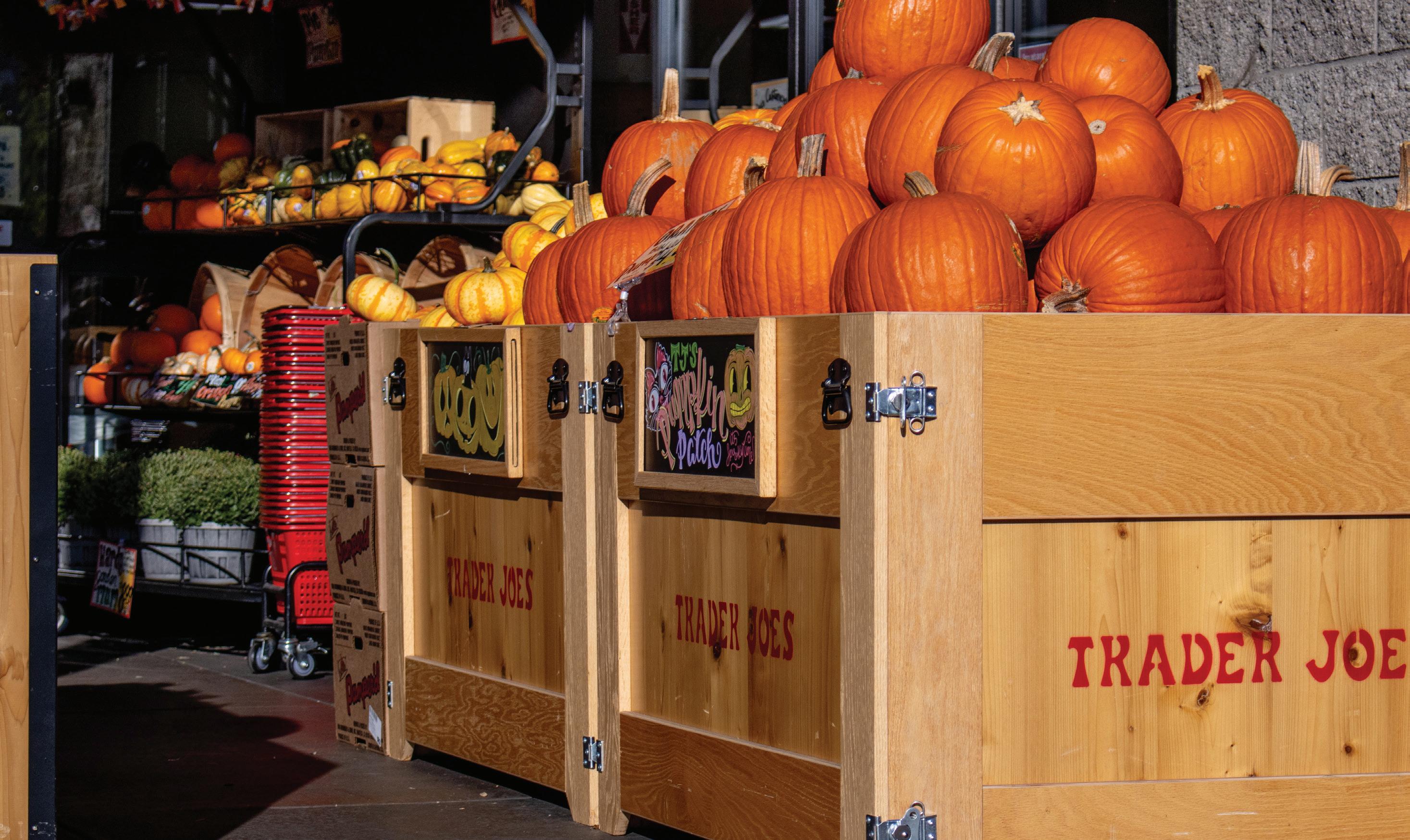
By Corey Hoffman Photographer


Continue east down 13th until you reach the Lokey Science Complex on the left. While the zebrafish outside the UO Science Library are a popular attraction, the seven gargoyles sprinkled around the building are also worth taking a look at. The heads of Albert Einstein, Marie Curie, Sir Issac Newton, Maxwell & his Demon, Thomas Condon, Alan Turing and John von Neumann decorate the façades of the Lokey Science Complex. The copper gargoyles were created between 1989 and 1990 by artist Wayne Chabre.
Continue east down 13th Ave until you reach Collier House on the right. While currently covered by construction, Collier House offers a look into the history of the university. Built in 1886 by an unknown architect, Collier House was the home of one of UO’s first faculty members.
According to UO logs, in 1900, UO’s Board of Regents voted to make Collier House the official residence of the university president. It underwent several changes and renovations and in 1941, the house became the home of UO’s Faculty Club. After the faculty club closed in 2003, Collier House became home to offices, classrooms and a music venue for the School of Music and Dance. In 2018, the UO Campus Planning Committee voted to move Collier House to the Gerlinger Lawn to make way for more academic buildings, but no progress has been made on the relocation project since.

of Knight Library until the path connects to Kincaid St. Continue along Kincaid St. until you reach 13th Ave. Turn right on 13th and stop outside Lundquist College of Business, where the newest Duck statue looms large. While the Large O outside Lillis Business Complex is a popular stop, the Duck statue provides a great photo-op for new and returning students alike. Unveiled in 2024, the statue is known as “The Thinker,” and was sculpted
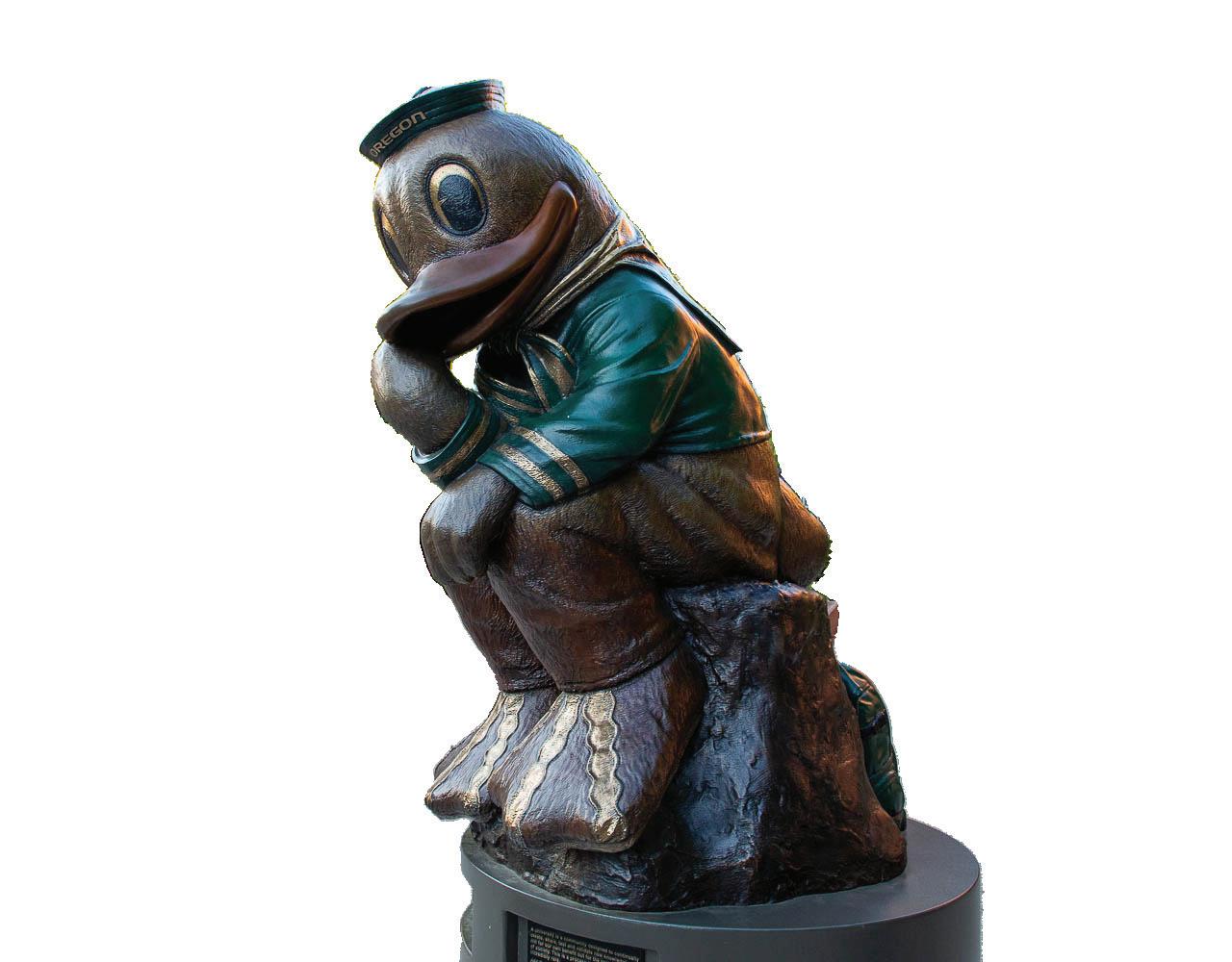
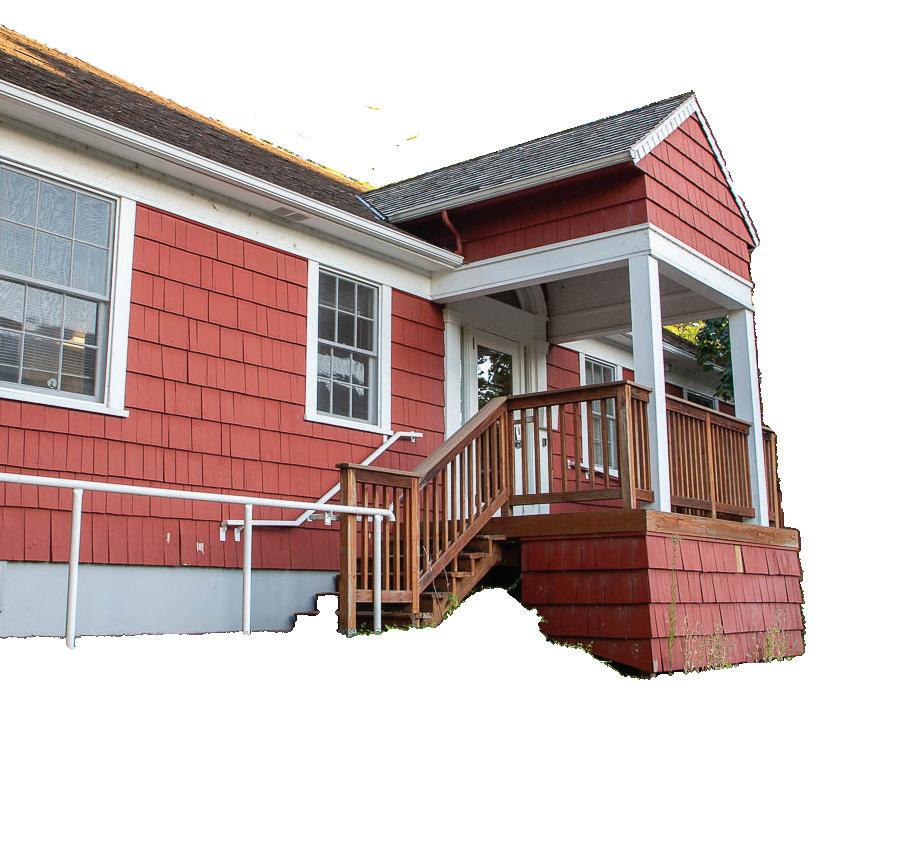
Continue west through the cemetery and cross the large field behind Knight Library, towards the Education Building. Nestled between the School of Music and Dance and the looming Education Complex is the Education Annex, a little wooden building nicknamed the “Little Red Schoolhouse” for its bright red coloring. Built in 1923, it originally sat behind Johnson Hall and was known as the Gift Campaign Building, where it housed UO’s primary funding organization for campus buildings. In the 1950s, it was moved behind the Education Building and in 1973, was moved to its present location.

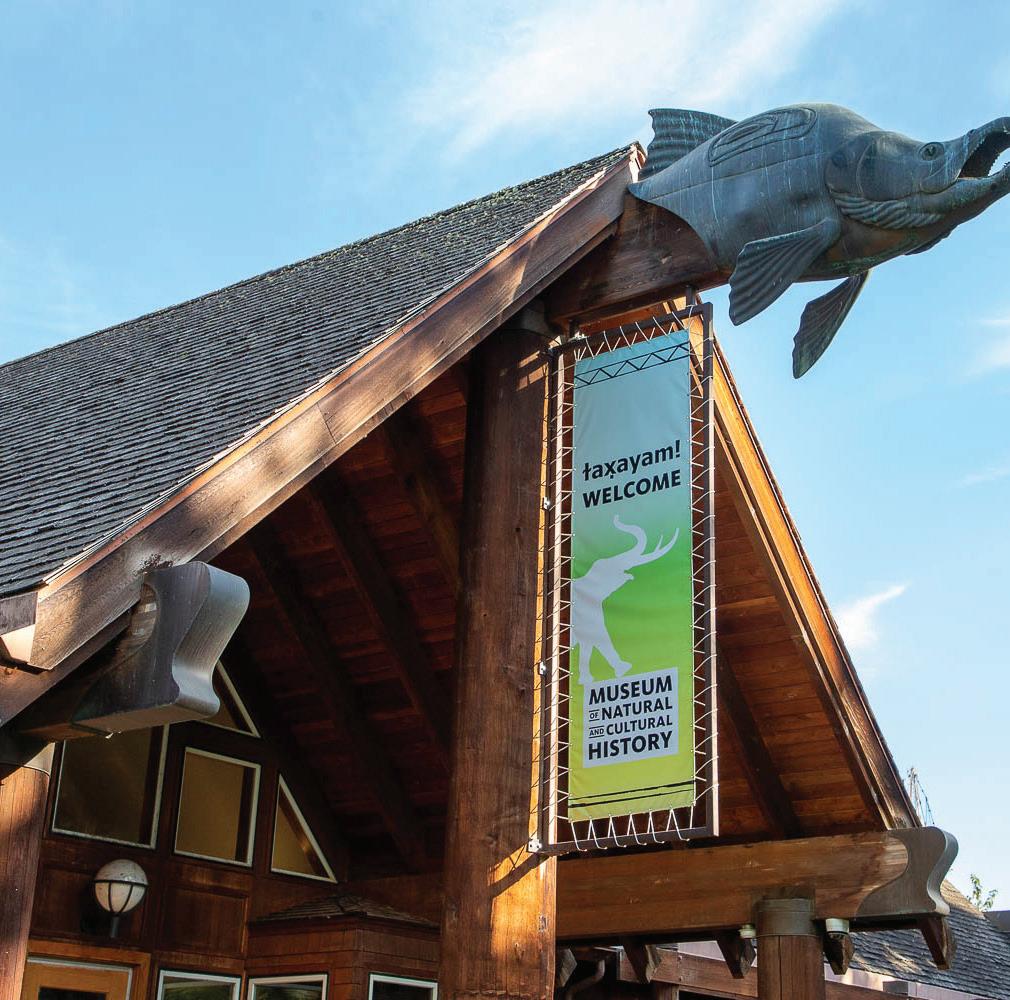
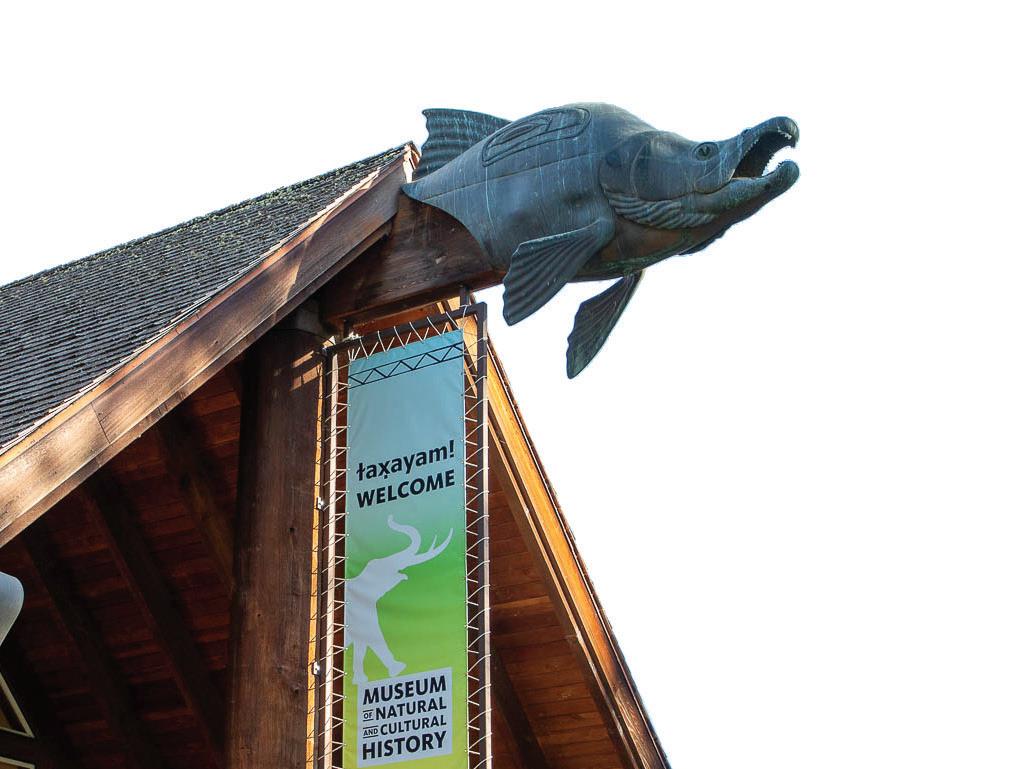
Start at the Museum of Natural and Cultural History. Established in 1935, this museum is the heart of the university’s paleontological and archeological collection and offers a less-busy museum experience than the Jordan Schnitzer Museum of Art. Even without going inside, the museum offers a wellrounded history of the region with its displays and outdoor exhibits.


From the museum, walk west up East 15th Ave. toward the Student Recreation Center. Just past Straub Hall and directly across from the Rec Center, take the small walking path next to the "Path/Wedge II" statue. A gift to the university from visiting artist and professor Susi Rosenburg, the piece reflects “life and the symbolism within the cycle of water,” according to a UO guide to campus artwork.


II statue" 1 2 3 4 5 9 1 START HERE

Continue along the same path and cross University St. to Gerlinger Hall. Steeped in history, Gerlinger’s Alumni Hall is one of the few places on campus where the original historic interior is still intact. Built in 1919 and one of three buildings that make up the Women’s Memorial Quad, Gerlinger was named for Irene Gerlinger, UO’s first female Regent. It, along with Hendricks Hall and Susan Campbell Hall, make up the Women’s Memorial Quadrangle, and are entered in the National Register of Historic Places.

Head directly across the street towards Pioneer Cemetery. Built in 1872, the cemetery holds roughly 4,000 burials across acres. The cemetery is the final resting place of Union soldier Louis Renninger who received the Medal of Honor his courageousness during the American Civil War. There have been several attempts to use the cemetery to expand the university, including an attempt to build stilted walkways and buildings over the graves. In 1997, Pioneer cemetery was entered into the National Register of Historic Places, halting possibilities of building in and around the cemetery.
Continue south on University street, toward McArthur Court. The original home of UO men’s and women’s basketball, McArthur Court was built in 1926 and served as the primary gymnasium and athletic hub for the university until 2011, when it was replaced by Matthew Knight Arena. The arena is named after Clifton N. McArthur, the first ASUO president and later Speaker of the Oregon House and U.S. Representative.
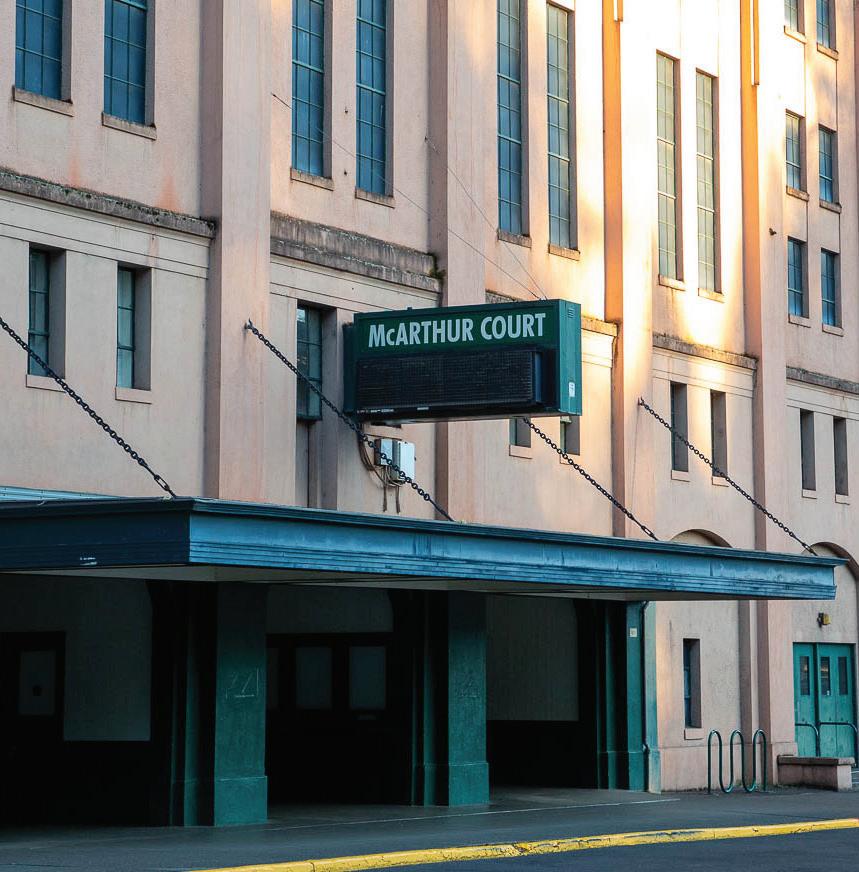









1 Get alerts
2 Build a kit with food, water, essential medication
Buy one extra can of food every time you go to the grocery store to make it manageable
3 Have a plan if communications go down have a plan of action for your family or your household
4 Look around for easily-fixable hazards
Examples include pictures hanging on the wall above your bed, unsecure furniture and uninsured insurance
5 Work with your community and elected officials to support earthquake safety
Opinion: A seismic science communicator shares what you can do to participate in the largest earthquake drill ever.
By Noa Schwartz Visuals Editor
Growing up in Southern California, earthquakes were a given. Before college, I thought Oregon was a “safe zone," somewhere free of seismic threats. I was wrong. My freshman year, I took a class called Volcanoes and Earthquakes, which introduced me to what scientists now call the 1700 Cascadia earthquake. Only recently, scientists have found evidence that a magnitude nine earthquake shook the coast, causing coastal “ghost forests” and a tsunami across the Pacific Ocean in Japan. Since then, the Cascadia subduction zone off the coast of the Pacific Northwest has been building pressure, and is expected to one day cause yet another megathrust earthquake.
This started my journey into the earth sciences, which led to an internship with the Cascadia Region Earthquake Science Center. The National Science Foundation-funded organization headquartered at the University of Oregon aims to build seismic preparedness in the Northwest after decades of inactivity. This includes conducting research, providing training and education for future geoscientists, and encouraging communication with the public.
CRESCENT Director and UO Professor of Earth Sciences Diego Melgar faces an uphill battle against generations of seismic inactivity.
“The issue has been that these large earthquakes have been few and far between, and as a result, we have forgotten,” Melgar said. “So the earthquake culture of the region is not nearly as well developed as it is in other places like California.”
Being prepared is less about knowledge than practice - especially among young people with little earthquake experience. Enter the Great ShakeOut. On Oct. 16 at 10:16 a.m. PST, 22.4 million people worldwide are expected to join the Great ShakeOut, the largest earthquake drill in the world. Launched in California in 2008, the event grew into an international effort by 2011 to promote earthquake safety. Each year on the third Thursday of October, communities across earthquake-prone regions practice how to prepare for seismic hazards.
Preparation is crucial not just for safety, but for confidence. Andre Le Duc, vice president of safety and risk services and chief resilience officer at UO, encourages Oregonians to focus on what they can control.
“If you’re in a crisis and don’t know what to do, that creates more stress,” Le Duc said. “Whereas if there is a tangible action you can take, you’re going to feel more empowered.”

action is easier said than done, especially after a few centuries of seismic
Kelly Missett, Communications Manager at the Oregon Hazards Lab, began as the Technical Engagement Regional Coordinator for ShakeAlert.
OHAZ, part of the University of Oregon’s Department of Earth Science, works with agencies to study natural hazards and provide public safety tools like ShakeAlert, which issues early warnings for earthquakes and tsunamis.
“For me to assume that everyone knows what to do in an earthquake, or that everyone knows we are in earthquake country, that’s really not true,” Missett said.
Preparation can also be costly. Earthquake kits and supplies add up, but knowing what to do is free and often the most effective protection.
“Do I invest in an emergency kit or do I buy lunch? Those are hard trade-offs,” Le Duc said. “That’s why basic, essential actions – how people move in a space and what they do – are so important.”
Communicating hazard information is clearly a top priority for emergency professionals, but difficult when it comes to disasters on such a massive scale.
“It can be hard to communicate the level of risk,” Missett said. “We can throw out a lot of numbers, but making them relevant to people’s daily lives bridges the gap between science and the public.”
Even scientists face uncertainty. Geoscientists like Melgar can estimate the size of the next earthquake but not exactly when it will strike.
“The public wants a single answer,” Melgar said. “That’s a problem across geohazards, but it’s particularly acute in earthquakes because big events are so infrequent.”
As I’ve learned while working for CRES-
CENT, hazard communication is a balance of conveying risk without “catastrophization.” It’s easy to lose people who feel powerless to stop something they can’t control.
“My concern is getting the public to understand that there are things you can do, even if you start small,” Le Duc said. “Sometimes we think, ‘There’s nothing I can do, so no reason to do anything.’”
The solution, he says, is building resilience before disaster strikes. Events like ShakeOut are a tool to help people prepare and recover more effectively.
“Resilience is about the ability to adapt and thrive,” Le Duc said. “It’s not just surviving an incident, but learning from it and reducing future impacts.”
To build resilience, the first step is simple: educate yourself. Knowing to “drop, cover and hold on” is a great start. More than that, Le Duc encourages everyone to see it as an opportunity to lead.
“Be a leader,” he said. “Drop, cover, hold on, and then educate others. We need to take care of everybody, and that happens one individual at a time.”
It’s important to remember that ShakeOut is a starting point, not a finish line. Every professional I spoke to emphasized that resilience is a practice, one that can be strengthened over time. For students looking to learn more, or for those who may be a part of the next generation of geoscientists, there’s much more to learn. Five steps of




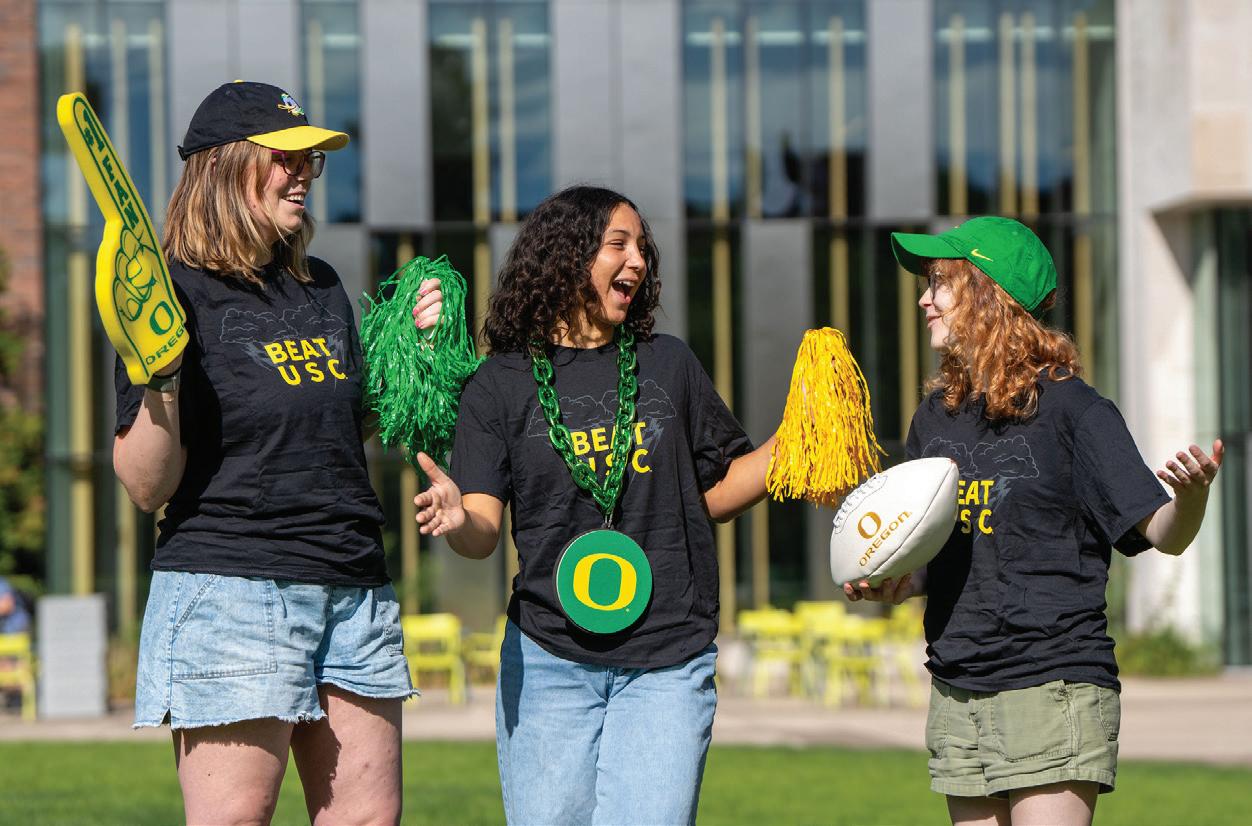

The Student Alumni Association (SAA) creates lifelong ducks who are committed to the UO We’re here to enhance your college experience with great member rewards and connections with alumni and other students! You can learn all about us by following us on IG @uosaa, or visiting our website at uoalumni.com/saa.
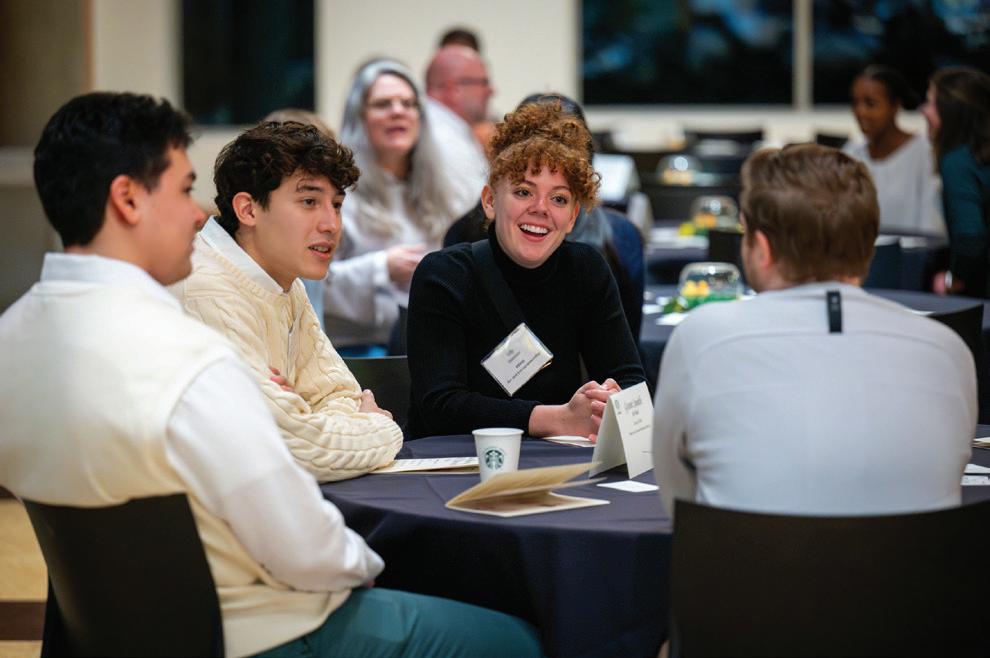


Photos by Uriah Barzola
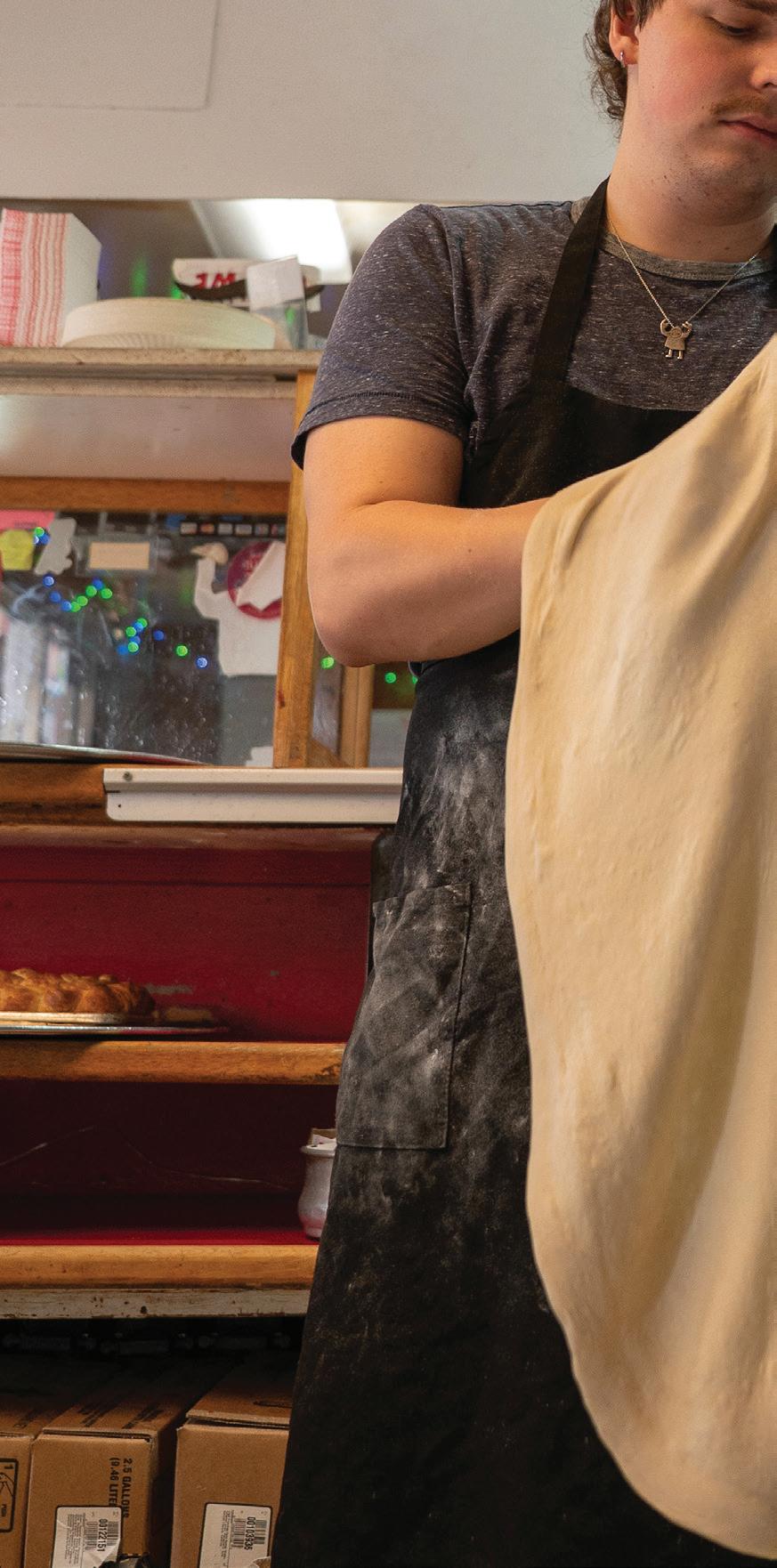
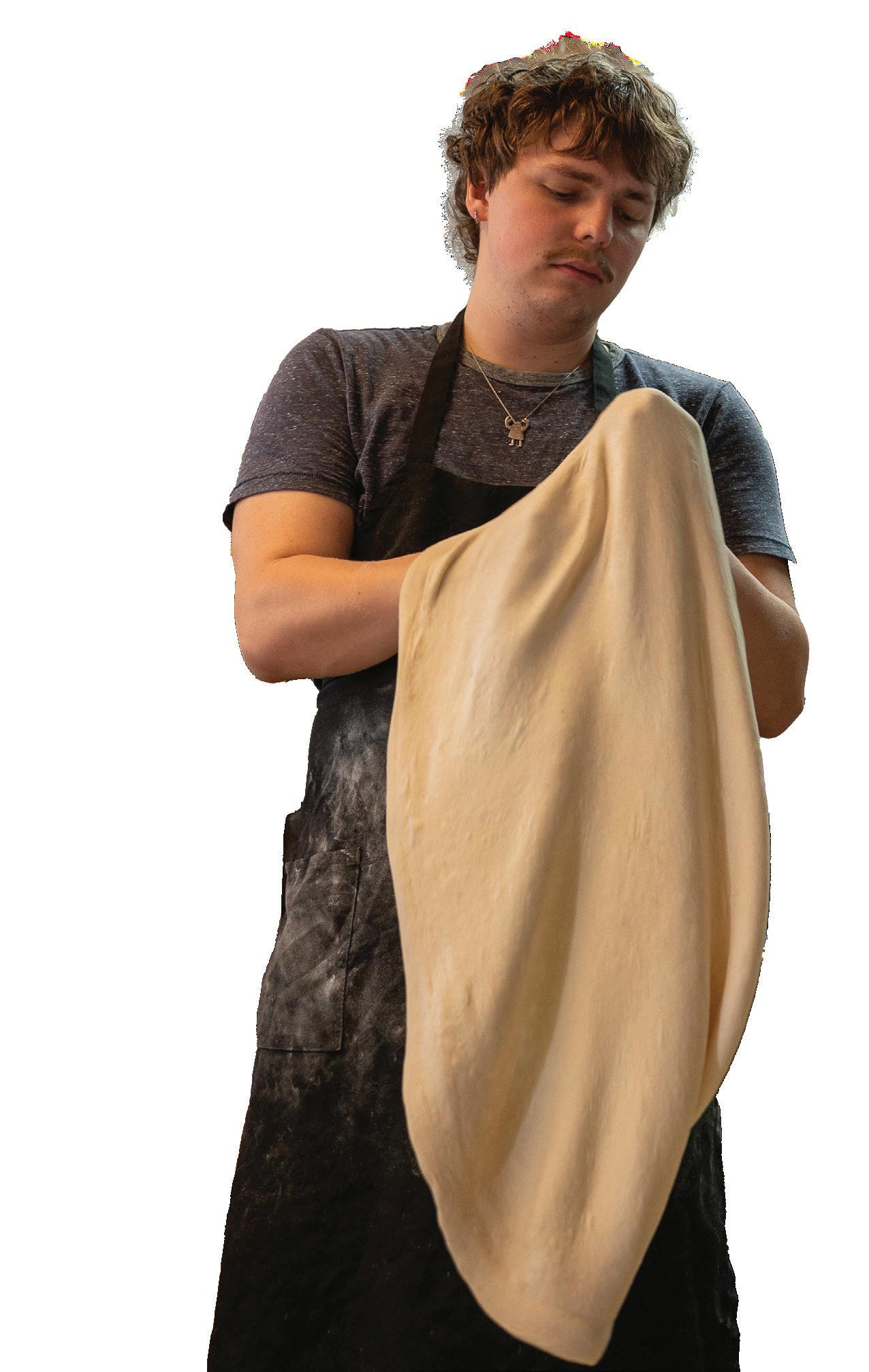
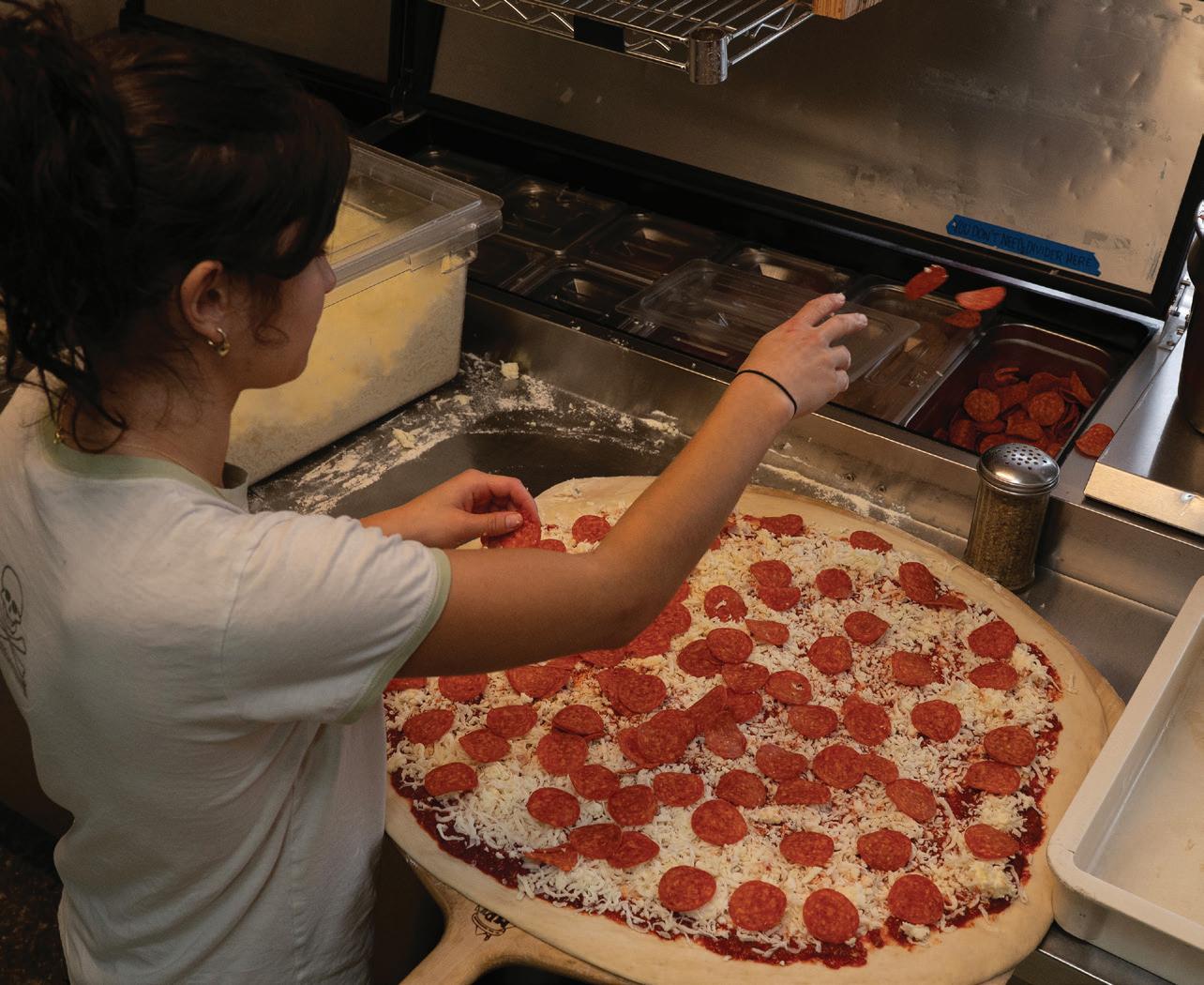
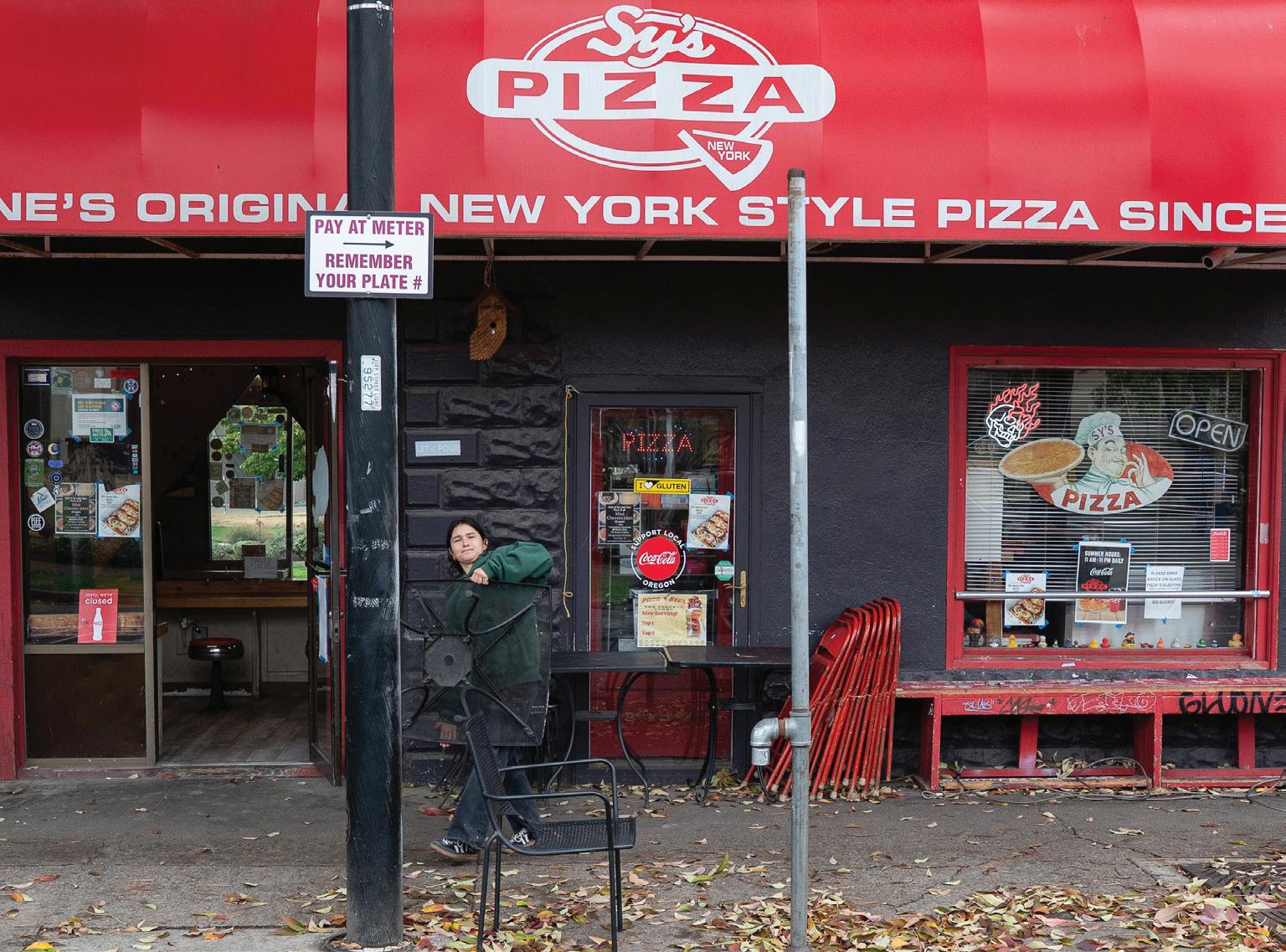
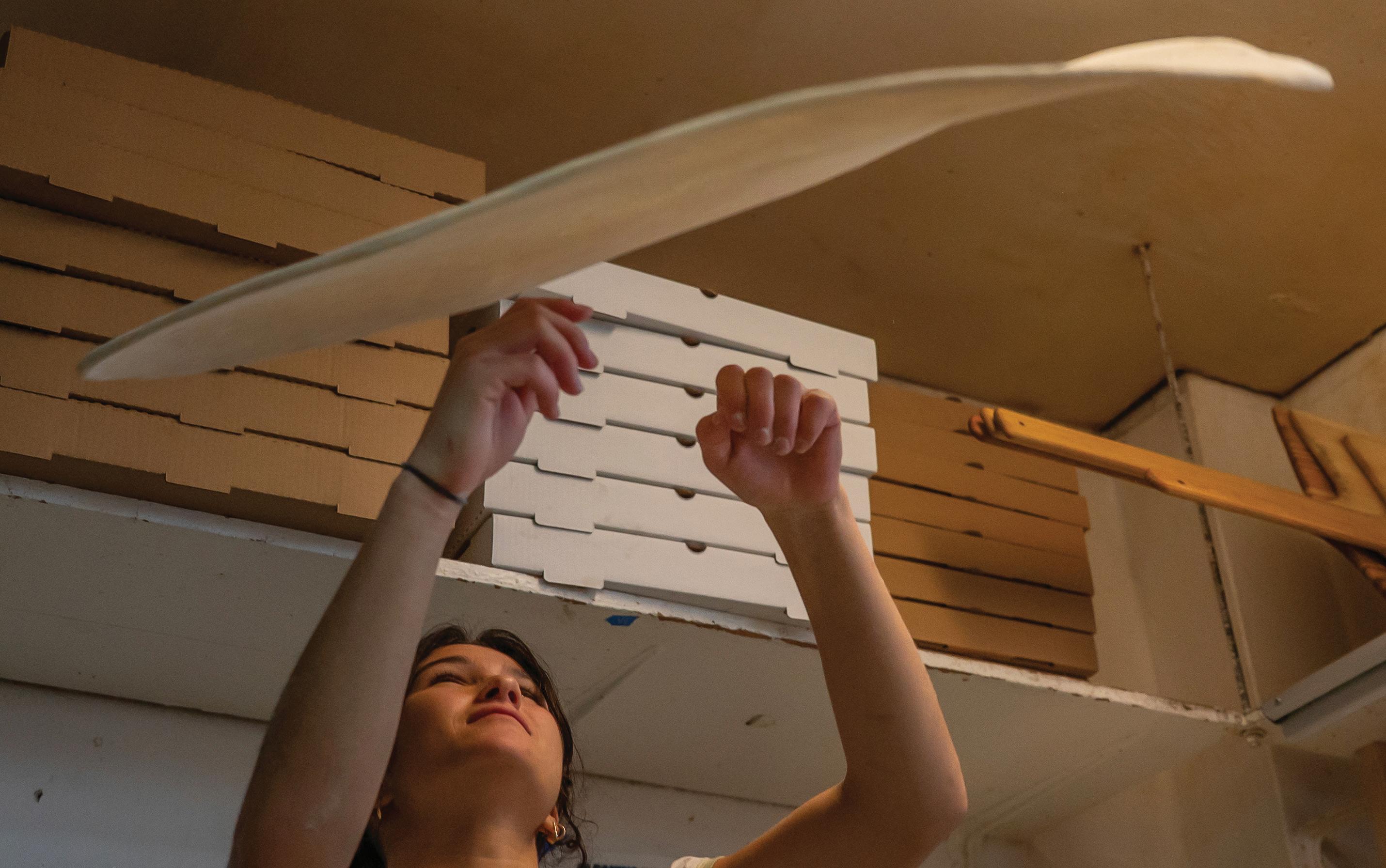

1 On the ___ (fleeing) 2 Palindromic Maori
The previous occurence
Kind of node or gland 5 “___ Made to Love Her”Stevie Wonder 6 Cong. member
8 Type of bird bred for blood sport
9 Type of creature voiced by Mike Meyers or Cameron Diaz
Ramadan ender
Russian assault rifles, casually
Slushy ice 18 Yale students 20 Female gametes 21 Maiden name preceder 22 “thats mb”

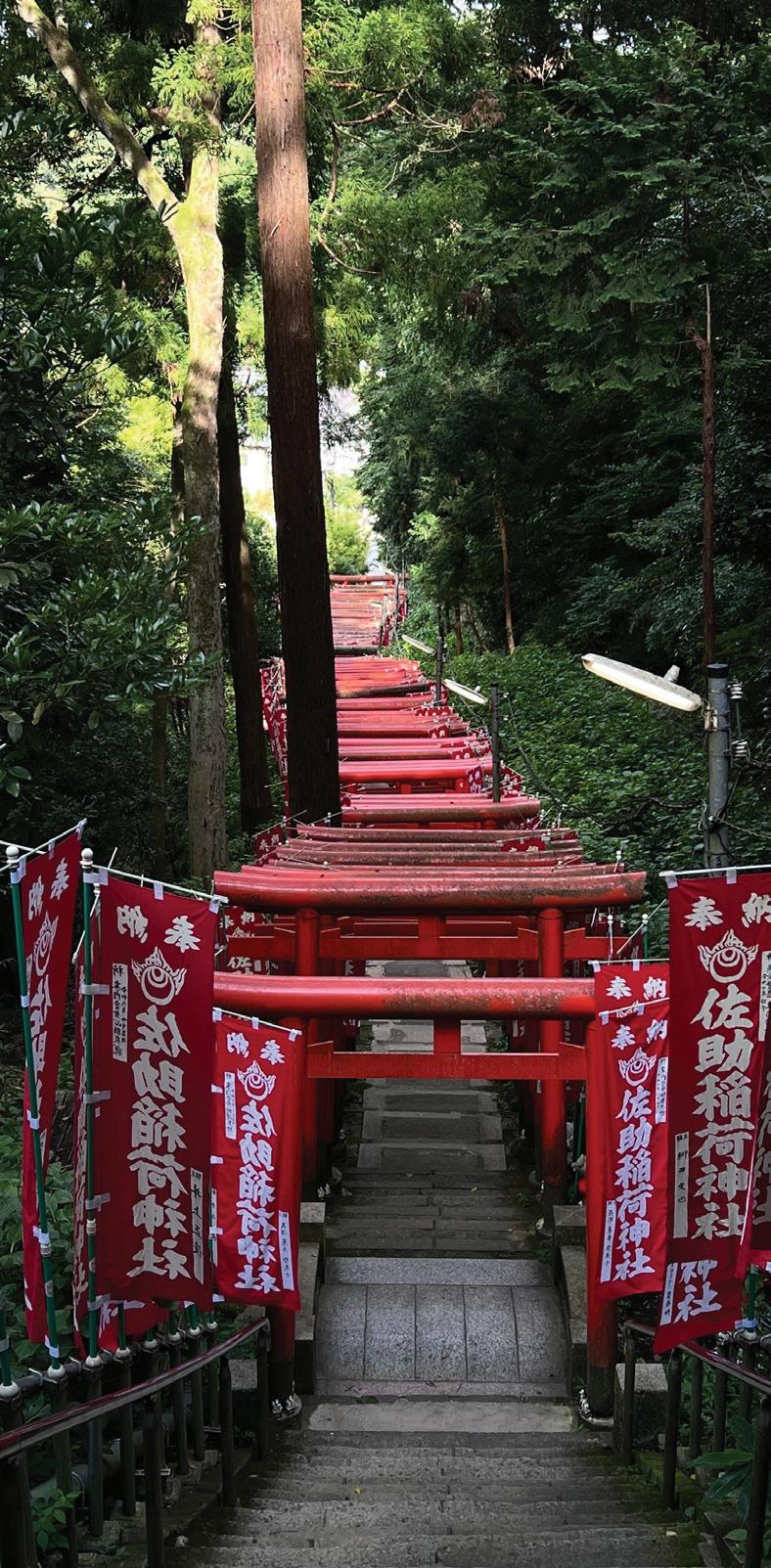
Opinion: Studying and interning abroad often causes culture shock. Whether it’s customs, shifts in environment and work life or homesickness, here are my strategies to overcome.
By Daria Morris Opinion Columnist
This summer, I interned abroad through the University of Oregon for a publishing company in Tokyo as a copywriter. I got to network with companies all across Japan and center my work toward public relations, which is my field of study. It was the best experience of my life.
Despite these two months being the best in my life, adjusting to a new country for that long and the lifestyle change did have an affect on me at the start. It took some time to adapt as someone who had never been to Asia.
Here is a list of tips and tricks to help students settle into their time abroad.
Downloading different apps can help immensely when abroad. Transportation apps like Suica allowed me to travel easily while in Japan, while Google Translate eased my stress when it came to the language barrier.
Another big one is WhatsApp. WhatsApp is a messaging app, just like iMessage, but it’s
much more popular in Europe and Asia. Having these ready to go makes the transition much easier when you are learning to get around your city or traveling outside of the area.
When thinking about culture shock, you might assume it to be worrisome or anxiety-inducing, but that isn’t always the case. More than you think, culture shocks are quite positive.
I had a conversation with An Ho, a UO junior who studied abroad in Tokyo, who said she was taken aback by the experience and loved some of the hidden surprises Japanese culture has to offer.
When it came to assistance while traveling, Ho explained that local residents of the area were always willing to help.
“The biggest culture shock for me was the willingness to help others, when it comes to meeting some of the specific demands, steps and tasks that you’re confused with, even just navigating the city or trying to order food,” Ho said. Ho explained it wasn’t something she was used to in America.
I believe that every university student should travel abroad during their time in college to immerse themselves in a new world and learn from the experience.
So let’s spend less time stressing and more time exploring.
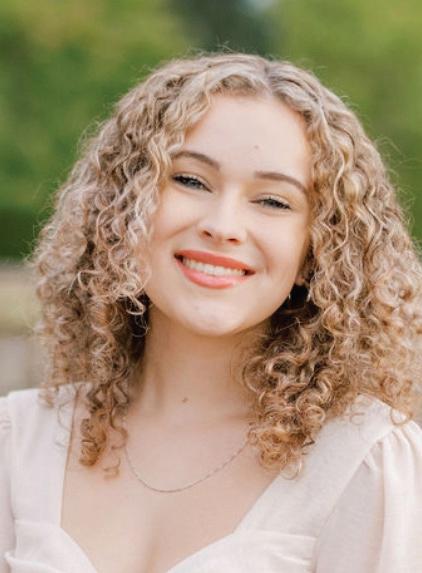
Daria Morris is an opinion columnist for the Daily Emerald. She is a thirdyear student at the University of Oregon majoring in journalism and communications with a minor in creative writing. Daria likes to write about feminist topics as well as deep topics that are related to students' wellbeing on campus.
By Vinnie White Arts & Culture Writer
Editor’s note: This article contains spoilers for the R-rated movie “One Battle After Another.” The content of this movie is of graphic nature.
Paul Thomas Anderson’s “One Battle After Another” is a beautifully relevant tale of family and revolutionism that serves as a tasteful representation of modern America as well as a touching depiction of a father-daughter relationship. Don’t be fooled by the marketing; this film is much more than the “action comedy” it says it is.
The film follows father-daughter duo Bob Ferguson (Leonardo DiCaprio) and Willa Ferguson (Chase Infiniti) as they are pursued by Steven Lockjaw (Sean Penn), a military colonel tied up in an underground white supremacist organization with a notable interest in Bob Fergusons black partner, Perfidia Beverly (Teyana Taylor).
This semi-love triangle and the family dynamics within it are the heartbeat of this story, but the radical political setting for the story is what really takes the narrative to new
Paul Thomas Anderson’s latest blockbuster sticks the landing in a truly special film.
heights. Since the Fergusons are hiding from Lockjaw in a sanctuary city, the intimidation and arrest of illegal immigrants acts as a guise for him to pursue the family.
DiCaprio as the loving, yet perpetually stoned father, was both hilarious and touching. Benicio del Toro’s smaller yet still punchy role as a calm and collected sensei and protector of immigrants is also a welcome addition to the film. In fact, nearly every supporting character is noteworthy in some way.
All in all, Chase Infiniti and Sean Penn come away as the clear acting highlights of this film. Making her film debut, Infiniti plays Willa’s relationship with her father with the ambiguity it needs to be compelling. Her love and simultaneous resentment for her father are always on full display in every interaction she has with him.
When it comes time for her to get her hands dirty, she successfully makes it clear that she is strong while still allowing some signs of fear to creep through. Penn manages to pull off a similarly complex character, balancing Lockjaw’s conflicting interests in a believable way as well as giving the character a unique walk and facial tic tick that makes him feel all the more real.
A huge component of this film is Radiohead’s own Jonny Greenwood’s score. Anxiety-ridden pianos, hand drum percussion and gorgeous orchestral arrangements all work to suit the dynamic nature of this film. This musical distinctness also works in tandem with the unique visual quality of the film.
“One Battle After Another” was shot on a 35mm film format called VistaVision. The format seems to be making a comeback this decade, with “The Brutalist” utilizing it last year to much aplomb, and for good reason.
The lighting, such as table lamps or police lights, gives off a unique glow that fills the somewhat hazy screen in a way not too often seen in theaters. Scenes actually have depth instead of appearing flat and washed out, tones are soft and grainy and it is overall just pleasant to look at. This unique visual identity is complemented by equally inventive cinematography, particularly in later sequences of the film, courtesy of Michael Bauman.
“One Battle After Another” is Paul Thomas Anderson at his finest, but it is also modern cinema at its finest. It is no doubt one of the best original films of the year and may just become a classic.









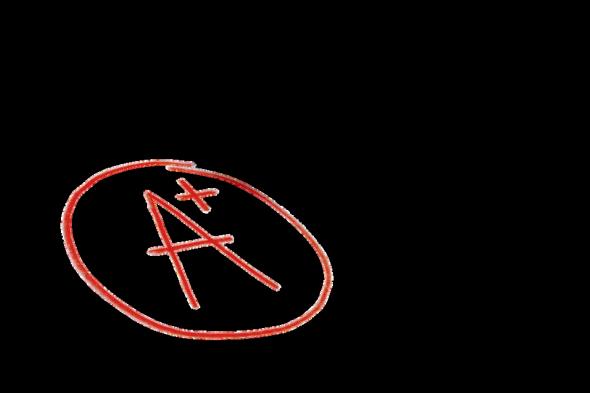




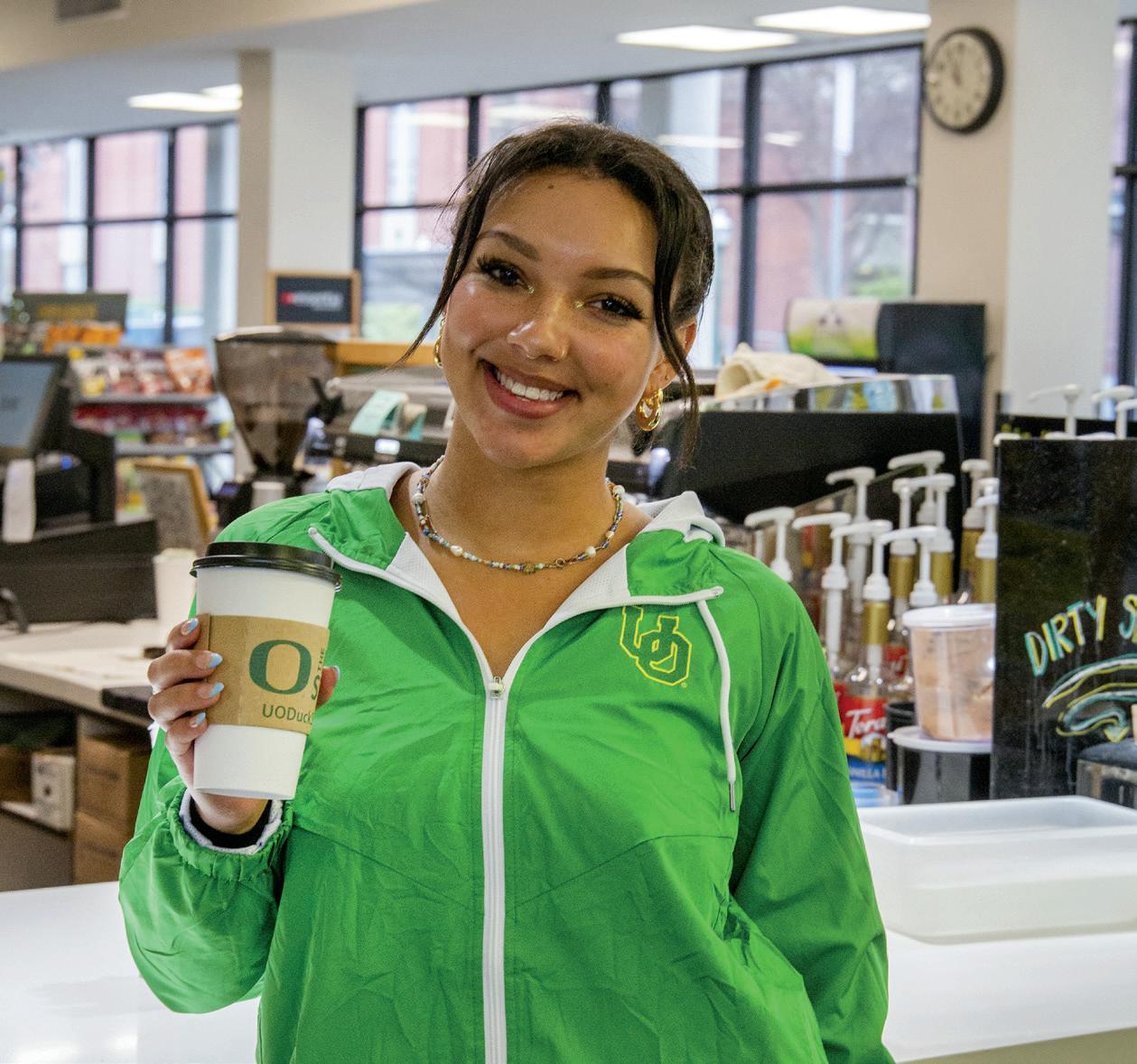





Oregon lacrosse's offseason in review.
By Joe Krasnowski Sports Writer
Head coach Jessica Drummond and Oregon lacrosse are fighting desperately to break the norm set in Eugene over the past decade or so.
The trend, dominating weaker non-conference opponents, only to get dismantled by much stronger conference opponents, has only been exacerbated by Oregon’s move to the hyper-competitive Big Ten.
A 6-10 record in 2025 — which included a 0-8 record in conference play and virtually zero close Big Ten losses — signified growing pains for the Ducks under Drummond. Still, with three new transfers and the development of Drummond’s first recruiting class, there’s plenty for Duck fans to be excited about in 2026 and beyond.
First, the positives: under Drummond, Oregon‘s transfer portal success has improved greatly, with Bri Carrasquillo transferring in for one season with the Ducks and scoring 40 goals as arguably Oregon’s best player last season.
Looking to continue that trend, Drummond brought in three impact transfers in defender Shelby Hahn (Marist College), attacker Jaeda Jensen (University of Detroit Mercy) and goalkeeper Francesca Viteritti (Stony Brook University). The three transfers combine to have over 70

games played, and should all start or contribute consistently throughout the season.
Viteritti is perhaps the Ducks' most important transfer, with the goaltender expected to fill in for graduated goalie Paige Crowther, whose strong play helped keep the score respectable in most losses last year.
Another welcomed development under Drummond has been Oregon’s home record. The Ducks were 5-4 in home games last season, improving their home record to 12-6 at home in the Drummond era.
Anna Simmons returns for her senior season as perhaps the Ducks' most potent offensive threat. Simmons was named the Big Ten midfielder of the week three straight times to begin the season, and finished with 33 goals, good for second on the team by a wide margin.
Lyla Hurley was another breakout star in the 2025 season, as the junior dished 11 assists and was a key cog in Oregon’s offense.
The infusion of talent and winning more games at home alone won’t be enough for Oregon to start winning games in such a talented conference.
Oregon was last in the Big Ten in average goals allowed, save percentage and groundballs, for what it’s worth, but it does little to the Ducks' hopes when almost the entire con-
ference is ranked in the top 25 nationally.
The Ducks will also need to show significant improvement on offense — especially with the graduation of Carrasquillo — as they ranked last in shots on goal and assists.
Another potential spot for improvement would be in power play goals, where the Ducks finished with just 13 throughout the 2025 season, in comparison to the rest of the Big Ten, which averaged around 20.
Still, in year three under Drummond — who brought in 10 freshmen in this recruiting season, including midfielder Jordan Woolworth from Tacoma, Washington, in the first class she fully controlled — the Ducks should be expected to take a step forward.
Oregon will play four total games against University of California, Berkeley, Stanford University and University of California, Davis in the UC Davis Fall Tournament. The Ducks’ 2026 regular season schedule is not yet announced.
( ABOVE) Bri Carrasquillo (11) and Avery Young (15), attackers for the Ducks lacrosse team, embrace after a second half goal. The Oregon Ducks took on the Butler Bulldogs in their home opener at Pape Field in Eugene, Ore. on Feb. 7, 2025.
(Julia Massa/Emerald)

Oregon’s new secondary is leading the charge for the Ducks.
By Joe Krasnowski Sports Reporter
You may have heard a member of No. 2 Oregon’s (5-0, 2-0 Big Ten) secondary made a big play in the Ducks’ 30-24 double overtime win over Penn State.
Trailing by six in the second overtime, Dillon Thieneman dropped into coverage and picked off Drew Allar to win the game for the Ducks.
“Unbelievable job by our defensive coaches game-planning that,” Oregon head coach Dan Lanning said. “They came out in 12 personnel, and we went nickel, which we hadn’t really done all game. Our guys executed really, really well.”
Lanning and defensive coordinator Tosh Lupoi called a play coverage they hadn’t used all game, and now the interception can be called one of the greatest Oregon moments in recent memory.
Afterward, Thieneman reflected on the moment.
“I just picked it off, and it didn’t feel real in the moment,” he said. “Then I kind of just got up and started running.”
The pick sent Oregon into the bye week on the highest of highs, complete with a win in one of the toughest environ-
ments in sports and possibly the best defensive performance of the Lanning era.
Spearheading the lockdown was a stout showing from Oregon’s secondary, a group that allowed just 137 passing yards and held the Nittany Lions’ two most potent receivers to two receptions for 16 yards.
Through five games, the Ducks are allowing just 104.8 passing yards per game, a trend Thieneman says is due to the secondary gelling together quickly.
“Reps in practice and talking through concepts, certain concepts (are important),” Thieneman said after a practice the week of the Penn State game. “We need good pre-snap communication, talking on and off the field, and the more reps we get, the better we are.”
Other members of the secondary agree.
“The biggest thing is being on the same page, and not being afraid of the moment,” defensive back Jadon Canady said. “Being a freshman playing like that, I never was scared, so I preach to the young guys like, ‘hey don’t be scared, just be on the same page, get the call, see it and execute.’”
Penn State also averaged just 4.6 yards per play, the lowest in offensive coordinator Andy Kotelnicki’s two seasons.
Saturday was far from perfect. The defense, although clinical for nearly three quarters, had breakdowns that allowed PSU back into the game. A few of those mistakes came from the star of the night, Thieneman.
“From my point of view, I had a couple of key mistakes on both their scoring drives that ended up leading to scores,” he said. “I think the few mistakes here and there, I know I made some mistakes, I know some other guys here and there, it just piled up and led to the score, but we stayed composed and were able to get through it.”
Winning cures all, though, and a group ranked No. 11 in total defense paired with a talented offense will be able to live with a few mistakes if they escape with a win.
“We trusted our offense. We trusted Dante. We trusted everyone on that side of the ball to go out there and do what they do,” Thieneman said. “We learned from our mistakes that we made in that fourth quarter that ended up leading to both those scores, and then we just had to go out there and execute.”
Lanning echoed a similar sentiment.
“I’m just really proud of our players that they got to experience what they worked really hard for. There’s a ton of emotion in a game like that. You put in your all, you work incredible hours, and players work so hard.”
ABOVE) Oregon
(1) is
(6)

